Authors
-
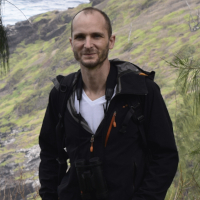
After a decade of various jobs and punctuated by travel, I resumed studies late in L1 biology at the University of Reunion and completed a doctoral thesis in forest ecology within the UMR PVBMT ((Unité Mixte de Recherche Peuplements Végétaux et Bioagresseurs en Milieu Tropical). My interest in the future of these ecosystems led me to pursue a postdoc with a view more applied to ecological restoration.
-
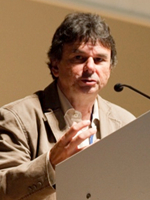
Denis ALLEMAND is a Monegasque researcher specialized in Comparative Physiology and Biodiversity. He was born on July 9, 1959 in Monaco. He obtained his doctorate in 1986 at the Université de Montpellier II in pharmacological sciences and endocrinology. He is a University Professor of Animal Biology. From 1998 to 2008, he founded and directed a research group at the Université de Nice-Sophia Antipolis on molecular interactions within marine symbioses and was for 4 years deputy director of the INRA - UNS Joint Unité Mixte de Recherche INRA – UNS « Réponses des Organismes aux Stress environnementaux » (80 people). Since 1989, he has also been developing a research programme within the Centre Scientifique de Monaco (CSM) of which he has been Scientific Director since 2001. This Monegasque organization dedicated to scientific research brings together some sixty researchers, technical and administrative staff in three departments: a Marine Biology Department, a Polar Biology Department and a Medical Biology Department. His main field of research concerns the comparative physiology of marine organisms, mainly corals (reef-building corals, red coral, gorgonians...). He is co-author of more than 140 scientific articles and numerous book chapters. He supervised 12 doctoral students. He is a member of various boards: - Scientific Council of the Institut océanographique Fondation Albert Ier – Prince de Monaco, - Scientific and Technical Council of the Fondation Prince Albert II, - Scientific Council of the École Pratique des Hautes Études (EPHE), - IFREMER Scientific Council, - Board of Directors of the Observatoire Océanologique de Villefranche-sur-Mer.
-
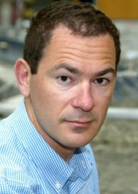
Christophe Ancey is a doctor of engineering with degrees from the École Centrale de Paris and the École Nationale Supérieure d'Hydraulique et de Mécanique de Grenoble. He completed his thesis on the rheology of granular flows under the supervision of Pierre Evesque and Philippe Coussot from 1994 to 1997: he worked from 1998 to 2003 as a research fellow (rheology) at Cemagref within the "erosion protection" team, which has since become the « Erosion Torrentielle, Neige et Avalanches » laboratory at IRSTEA. Since 2003, he has been professor of fluid mechanics at EPFL and heads the Laboratoire d'Hydraulique Environnement. He conducts research on granular suspension flows and particle transport. In parallel, he created with Claude Charlier and Vincent Bain a consulting structure (Toraval) for paravalanche engineering and torrential hydraulics, which offered him a vast field of applications to his theoretical developments. Finally, he is associate editor for Water Resources Research and Journal of Geophysical Research: Earth Surface, two flagship journals in the field of water sciences.
-
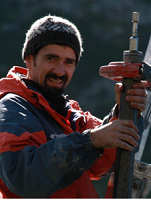
Fabien Arnaud is a research director at the CNRS, assigned to the EDYTEM laboratory (Environnement DYnamique et TErritoire de la Montagne). He is working to reconstruct the past climate and environment from sediment cores collected mainly from lakes. In order to understand past variations, he uses sedimentological, geochemical and geochronological methods. He has been the director of the EDYTEM laboratory since 2015 and has published more than 70 scientific articles on climate and past environments in peer-reviewed journals. Since 2012, he has been the scientific coordinator of the "continent" component of the future-oriented investment project "Equipex CLIMCOR", which aims to strengthen national capacity in terms of scientific coring.
-
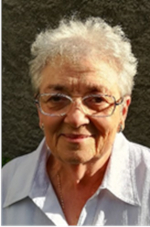
Juliette Asta has pursued her career as an associate professor-researcher at the Université de Grenoble, first at Professor Ozenda's Botany Laboratory and then at the Laboratoire d’Ecologie Alpine. In Teaching, she was mainly in charge of preparing students for the CAPES and Aggregation Competitions and Master's Ecology courses. In research, she has specialized in the study of lichens by studying different aspects, alone or in collaboration with her students and with other researchers from different disciplines: systematic studies on alpine flora and vegetation, multidimensional statistical approaches, mineral constitution, relationships between lichens and substrates, colonization (bark, soil, rock), physiological studies at high altitude, detection of different types of pollution (fluorine, heavy metals, acid pollution, incineration plant, landfills, etc.). Contribution to the development of AFNOR Standards on the use of lichens in the detection of air pollution. Supervised several university theses. Author of more than a hundred scientific publications. After his retirement, he became a volunteer researcher for 15 years and co-author of 3 Guides des Lichens de France (Lichens des arbres, Lichens des sols, Lichens des roches) and the Guide de la nature en Ville (Ed. Belin). Prix Gandoger de la Société Botanique de France (1994). President on two occasions of the Association Française de Llchénologie (A.F.L.) of which she has been a member since the beginning (1976) and a medalist (2004).
-
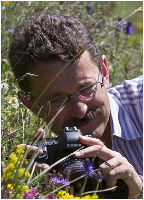
Serge Aubert (1966-2015) was Professor at the Université Joseph Fourier, Director of the Station Alpine Joseph Fourier and researcher at the Laboratoire d’écologie alpine (LECA). His initial training in plant cell physiology was confirmed by a thesis on the metabolism of non-chlorophyll plant cells at the Laboratoire de Physiologie cellulaire et végétale (LPCV) in Grenoble. Little by little, his work is oriented towards the response of alpine plants to the various stresses they face. He joined the LECA (Laboratoire d’écologie alpine) in 2003, and collaborates in numerous research programs on the diversity of alpine plants. More recently, he had been involved in large projects dealing with the geographical distribution of high-altitude plants, in particular compact plants called pillow plants, for which he had become the undisputed specialist. Serge Aubert will be at the origin of the creation in 2005 of the unité mixte de service Station Alpine J. Fourier (UMS UJF-CNRS), of which he will ensure the continuous management.
-

Graduated from a Master in Ecology, Biodiversity and Evolution with a specialization in Ecological Engineering and Ecosystem Management (Université Paris Sud-XI; 2008), a Doctorate in Ecotoxicology, Biodiversity and Ecosystem (Université de Lorraine; 2012), a Postdoctoral fellowship in the United States (Université du Michigan; 2013), Apolline Auclerc is now Senior Lecturer in soil biology / ecology since 2013 at the University of Lorraine, within the ENSAIA and the Laboratoire Sols et Environnement. His teaching and his research projects are placed in the study of taxonomic diversity (development of participatory science tools in particular) and the functional roles played by meso and macro invertebrates in the soil in highly anthropized environments. Apolline Auclerc is a leader or partner of projects around soil biodiversity such as the Campus France project on the study of soil biodiversity at rare earth mining sites in China (2018-2020), the ANR BISES project (Biodiversity of urban soils and sustainable cities 2020-2023), the ADEME SEMOIRS project (Evaluation des Services Ecosystémiques provided by urban micro-farms and their Soils 2018-2020) and the BUILDs project (Building urban intelligent living design solutions - Knowledge Alliances Erasmus + Europe ). Apolline Auclerc also brings its scientific expertise to the young company Sol & co
-
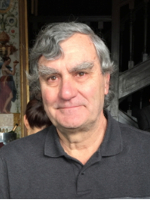
Pierre Auger is Research Director at Institut de Recherche pour le Développement at the Unité Mixte Internationale UMMISCO, Unité de Modélisation Mathématique et Informatique des Systèmes Complexes, which he headed from 2009 to 2013. Pierre Auger is a specialist in mathematical modelling in population dynamics. He has contributed to the methods of dimension reduction in dynamic systems that he has implemented in population dynamics. He worked on fisheries modelling in collaboration with INRH (Institut National de Recherche Halieutique) in Morocco from 2008 to 2012, and with CRODT (Centre de Recherche Océanographique de Dakar-Thiaroye) in Senegal from 2012 to 2017 where he was assigned by his Institut de Recherche pour le Développement, IRD. Pierre Auger has also worked on modelling the population dynamics of large mammals in Kenya in collaboration with the African Conservation Center in Nairobi. Pierre Auger has been a member of the Academy of Sciences since 2003. He is the author of a popularization book on mathematical modelling in ecology (Dunod, 2010).
-
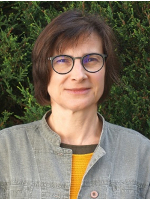
Marie-Anne Auger-Rozenberg is Research Director in the unité de Zoologie Forestière of the INRA. Trained as a biologist, she turned to the genetics of seed and cone insects after her recruitment. She mainly develops research on the integrative taxonomy and genetics of invasive and expanding forest insect populations under the influence of anthropogenic changes. In this context, she is working on the study of genetic tracing of invasion pathways, taking into account the processes involved in the arrival and installation of invasives in relation to the topology of commercial networks.
-
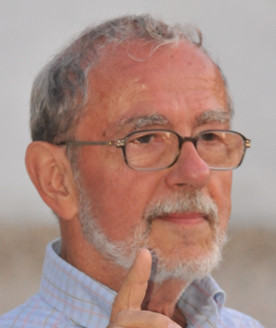
Soil researcher at l'INRA. Career started with cartography at medium scales. Doctor from the University of Nancy 1 (1983). Author of more than 196 scientific articles. Author or coordinator of scientific and technical works: typological repositories, soil description, analysis guide, pedology lexicon, metallic trace elements of natural origin, pedogenesis. Member of the Board of Directors of AFES (French Association for Soil Studies).
-
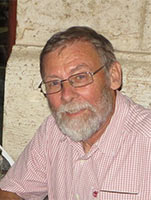
Michel Bakalowicz is a Doctor of Natural Sciences, Université Paris-6, after a postgraduate doctorate in karst hydrogeology from Taurus, Turkey. He worked at CEMAGREF, in the Hydrology Division (1971-1972). Then he completed his thesis on the contributions of geochemistry and isotopes to the understanding of the genesis and functioning of karst aquifers under the direction of Bernard Gèze and René Létolle from 1972 to 1979, at the Laboratoire Souterrain of the CNRS in Moulis, Ariège. He was then seconded to Mac Master University, Hamilton, Ontario, to study underground paleoenvironments using isotopes and U/Th radiochronology (1981-1982). The methodological developments to which he contributed led him to act as a scientific referent of karst in numerous studies applied for BRGM and the Ministries of the Environment and Cultural Affairs (1983-1994). He was made available to BRGM as a scientific advisor when the Unité Hydrogéologie des milieux hétérogènes was created in Montpellier to develop research in karst hydrogeology (1995-2004). Finally, as part of the cooperation with Lebanon, he is seconded to the IRD to manage the Centre Régional de l’Eau et de l’Environnement de l’École Supérieure d’Ingénieurs de Beyrouth (2004-2008), where he is in charge of teaching, supervising theses and leading regional research programmes. From 1995 to 2008, it was attached to the HydroSciences Montpellier Laboratory laboratoire HydroSciences Montpellier. He has been a lecturer in karst hydrogeology and water geochemistry at the universités de Paris-6, Toulouse, Avignon, Montpellier and Beirut. He has also been an expert with the IAEA to lead and evaluate projects on karst water resources in Haiti, Morocco, Algeria, Syria and Lebanon and has led scientific cooperation projects in China.
-
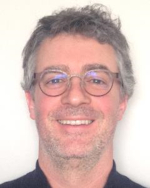
Doctoral thesis, microbiology specialty, Université d’Auvergne-Clermont I, 2006 Habilitation to Direct Research (HDR), Université d’Auvergne-Clermont I, 2014 2003-2006: Doctoral thesis under the supervision of C. Forestier, Laboratoire de Bactériologie, Université d’Auvergne-Clermont I 2006-2009: post-doctoral internship at the Institut Pasteur in Paris under the supervision of P. Cossart, « Unité des Interactions Bactéries-Cellules » 2009-present: Lecturer, UFR of Pharmacy, Université Clermont-Auvergne.
-
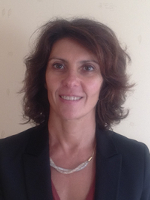
Christelle Ballandras-Rozet defended her doctoral thesis in Environmental Law in 2005, on the theme: "Conventional techniques for combating pollution and nuisances and preventing technological risks". Since then, she has continued her research in public law and environmental law, having recently published the following articles: "Regards croisés sur l'équilibre en finances publiques et en droit de l'environnement", 2017; "Quelle efficativité pour les référés-environnement ?", RJE 2-2016; Commentary on the CAA judgment in Lyon, 4 June 2015, Commune de Toulouse, n°14LY00058, ALYODA, December 2015. It also participates in collective research leading to publications, such as the drafting, in 2017, of a methodological guide on "CSR, Dynamics of negotiation and compromise in the context of technological risk activities" (research contract between the Fondation pour une culture de sécurité industrielle FonCSi and the Université Jean Moulin Lyon 3). It is part of the Institut du Droit de l’Environnement of the Université Jean Moulin Lyon 3.
-
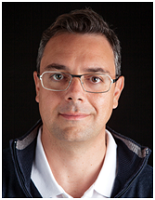
Gianpaolo Balsamo was born in Turin, where he studied until his master's degree in atmospheric physics. His professional approach as a meteorological forecaster at the Service Régional du Piémont in Italy has stimulated his interest in research, starting in 2000 as a young researcher in the Groupe de Modélisation et Assimilation pour la Prévision (GMAP) of the Centre national de Recherche Météorologique (CNRM) of Météo-France, and continuing in 2004 in the Research Team in Recherche en Prévision Numérique (RPN) of the Service Métrologique Canadien de l’Environnement. Since 2006 he has been working as a surface modelling manager at the Centre Européen de Prévision Météorologique à Moyen Terme (CEPMMT) with the position of team leader since 2016.
-
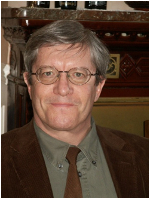
Bernard Barraqué, a mining civil engineer and Harvard graduate urban planner, worked first as an urban environment consultant and then increasingly as a researcher and teacher. Recruited to the CNRS in 1988 as an interdisciplinary department in architecture, urban planning and society, he worked 19 years at the Laboratoire Techniques Territoires et Sociétés (LATTS) before joining the CIRED, where he is now Emeritus Director of Rsearch. It analyses in a comparative and historical way, in Europe and in some emerging countries, the reasonable and equitable sharing of water resources, the sustainable management of public water and sanitation services, and the link between the two. His latest project, Water&3E, was funded by the ANR Ville durable, and left a blog available: http://eau3e.hypotheses.org. He is currently reflecting on the nature of water as a common good, and on the history of economics, law, and related public policies.
-
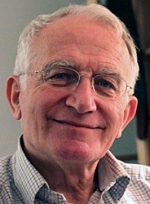
Bertrand BARRÉ (1942-2019) was retired from the CEA (Commissariat à l'Energie Atomique et aux Energies Alternatives), and AREVA, and was Professor Emeritus at the Institut National des Sciences et Techniques Nucléaires (INSTN), and a teacher in several Grandes Ecoles, including Sciences-Po/PSIA.
-
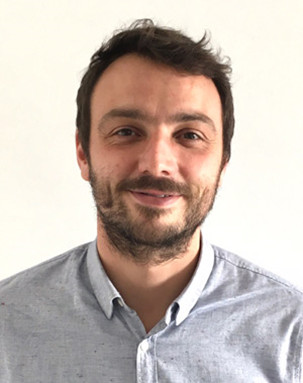
I am a psychiatrist specializing in brain stimulation and psychopharmacology at the Guillaume Régnier Hospital Center. I completed my entire academic career (medical thesis in psychiatry and university in neurosciences) at the University of Rennes 1 (faculty of medicine and Vie Agro Santé doctoral school). I did a two-year postdoctoral mobility in the Brain Stimulation Lab at Stanford University (Director: Dr Nolan Williams) where I worked on clinical studies testing transcranial magnetic stimulation techniques neuroguided by functional imaging rest. I currently lead a unit specializing in treatment-resistant neuropsychiatric disorders (mainly depression, Parkinson's disease with psychiatric comorbidities and obsessive-compulsive disorder). In this unit, I use and coordinate neuromodulation techniques such as repetitive transcranial magnetic stimulation, electroconvulsive therapy and deep brain stimulation. On the research side of my activity, in addition to my research centered on the development of innovative techniques of transcranial magnetic stimulation, my work is interested in studying the biomarkers of poor prognosis of depressive disorder using clinical / neuropsychological assessments /brain imaging. In addition, I am conducting research on neurofeedback applied to depression. Apart from being involved in the national coordination of this theme for psychiatric diseases (Neurofeedback section of the French Association of Biological Psychiatry and Neuropsychopharmacology https://www.afpbn.org/sections/next/), I participated actively developing a new generation of brain-computer interface therapies based on bimodal EEG-fMRI neurofeedback. In this project, I led clinical research applying this new technology to depression. I am very interested in the work on biomarkers of neuropsychiatric disorders and the development of personalized targeting neuromodulation techniques.
-
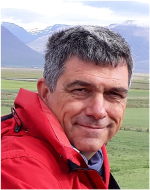
Doctor of Geosciences (1989), François BAUDIN became a professor after ten years as a research fellow at the CNRS. He teaches sedimentology and petroleum geology at Sorbonne Université (ex Univ. Paris 06-UPMC), and is part of the laboratoire ISTeP. The main thrust of his work is to understand the processes that control the preservation and distribution of organic matter in current and fossil sediments. His work has been awarded the Prix Cayeux de l'Académie des Sciences (1993), the Médaille de Bronze du CNRS (1999), the Prix Tissot de l’Académie des Sciences (2007) and the Dumont Medal of the Geologica Belgica Society (2017). Head of the Évolution et Modélisation des Bassins Sédimentaires team within his research unit (2006-2013), he was deputy director and then director of the Research Fédération de Recherche 32 CEPAGE (1999-2006), head of the Licence Sciences Terre at the UPMC (2000-2006) and then director of the École Doctorale 398 "Géosciences, ressources naturelles, environnements" (2007-2016). He was a member of the Capes SVT jury (2010-2013) and has been a member of the Agrégation SVTU jury since 2017. He has also been Vice-President of the Société géologique de France since 2016.
-
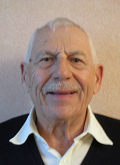
Elie Belorizky was Professor of Physics at Université Joseph Fourier in Grenoble where he was appointed after a post-doctoral stay at Oxford University. A condensed matter theorist, he specialized in problems of magnetism, Paramagnetic Electronic Resonance (PER) and Nuclear Magnetic Resonance (NMR) in liquids. He is a scientific collaborator at the Laboratoire Interdisciplinaire de Physique of the Université Grenoble-Alpes (UGA) and scientific advisor to the CEA Grenoble at the Direction de la Recherche Technologique (DRT) where he carries out work on medical imaging by NMR. He is the author of more than a hundred articles published in international scientific journals. He has taught in all cycles of higher education from the first year of his bachelor's degree to the preparation for the agrégation de physique exam and has given numerous courses in doctoral schools. He has contributed to the creation of several courses (bachelor's degree, master's degree, master's degree). He has also written several books on Quantum Mechanics, Statistical Physics, Mathematics for scientists and engineers and is co-author of more specialized books on EPR, and MRI (Magnetic Resonance Imaging).
-
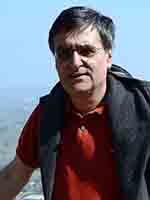
Martin Beniston completed his university studies in England and his doctoral thesis in Paris and finally his Habilitation at the Swiss Federal Institute of Technology in Zurich. He has worked in climate research in Australia, France, Canada, Germany and Switzerland. From 1993-1996 he divided his time between climate research at the Swiss Federal Institute of Technology in Zurich (ETH-Zurich) and vice-chairmanship of the "Impacts" group of the IPCC (Intergovernmental Panel on Climate Change) before being appointed professor at the Université de Fribourg, where he headed the Institut de Géographie. In 2006, he moved to the Université de Genève as professor and director of the Institut des Sciences de l’Environnement. Among the many projects he has led, the major European project ACQWA (www.acqwa.ch) on water resources in a changing climate. He has nearly 200 scientific publications to his credit and, in 2000, was elected a member of the European Academy of Sciences (Academia Europea).
-
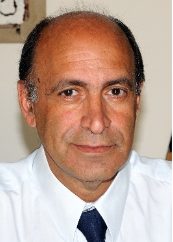
Roberto Benzi, professor of theoretical physics at Univ. of Roma “Tor Vergata”, did a master thesis on second order phase transition under the supervision of Nicola Cabibbo and Giorgio Parisi. Since then, he worked on climate dynamics and turbulence, using high resolution numerical simulations. After a research position at the IBM Center for Parallel and Vector Computing in Roma, he obtained his professor position at Roma in 1988. With S. Succi, he introduced the lattice Boltzmann equation for computational fluid mechanics. In the last fifteen years he worked on turbulence for complex flows (turbulent drag reduction by polymer) and rheology of soft glasses. He also worked on population dynamics in laminar and turbulent flows. He has got several major prizes: in 1984, IBM International Prize for Outstanding Technical and Scientific Innovation. In 2006, the Lewis Fry Richardson medal of the European. Geophysical Society . In 2021 the IG Nobel Prize in Physics.
-
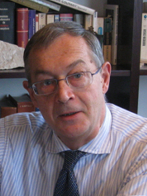
Graduated from the Ecole Polytechnique in 1973 and the Ecole des Mines de Paris in 1976, doctor of engineering from the Ecole des Mines de Paris. From 1981 to 2017, researcher at the Laboratoire de mécanique des solides at the Ecole Polytechnique, which he directed from 1990 to 2001. Associate Professor of Continuous Media Mechanics at the Ecole Polytechnique from 1989 to 2000. Scientific adviser in the Department of Sciences Pour l’Ingénieur at the CNRS from 1998 to 1997. Chairman of the Scientific Council of the LCPC from 1998 to 2006. Expert at the Scientific Council of IFPen. Member of the Editorial Committee of the Oil & Gas Science and Technology Review. Author or co-author of 200 articles (Reviews or Conference Proceedings) in the fields of plasticity, visco-plasticity, stability, thermomechanics, thermodynamics applied to underground structures, mines, tunnels, gas, oil or radioactive waste storage. Grand Prix du Gaz de France awarded by the Académie des Sciences in 1999. Chairman of the Groupe Permanent Déchets at the Autorité de Sûreté Nucléaire. Member (liaison) of the International Geomechanical Commission on underground nuclear testing in French Polynesia (1988-1999), Chairman of the Steering Committee set up after the fire in Stocamine (2001); member of the Blue Ribbon Commission to the State of Louisiana after the collapse of Bayou Corne (2013-2014). President of the Solution Mining Research Institute in 2011.
-
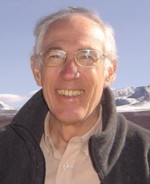
André Berger is a Master in Meteorological Sciences from the M.I.T. and a Doctor of Science from the Catholic University of Louvain (Centre de Recherche sur la Terre et le Climat Georges Lemaître where he was Professor of Climatology. He was the President of the International Climate Commission of IUGG, the Paleoclimate Commission of INQUA, and the European Geophysical Society. He is Honorary President of the European Union of Geosciences. He has received the Milankovitch Medal of the EGS, the Five-Year Prize of the French National Fund for Scientific Research, the Latsis Prize of the European Science Foundation and an Advanced Research Grant from the European Research Council. He has actively participated in the revival of Milankovitch's astronomical paleoclimate theory and has accurately calculated the long-term variations of climate precession, obliquity and daily and seasonal solar irradiation for the last millions of years. He works on the modelling of glacial-interglacial cycles. He is a member of several Academies including the Academy of Sciences of Paris and the Royal Academy of Belgium. He has received honorary doctorates from the Universities of Aix Marseille, Toulouse and Massachusetts. He was ennobled by the King of the Belgians and is an Officer of the Legion of Honour.
-

Guy BESLIN graduated as an electrical engineer from INP Grenoble (1975) and from IAE (Institut d'Administration des Entreprises). He holds a post-graduate diploma in business management and finance and has worked in the energy sector, mainly in electricity production and gas and electricity distribution. At ENGIE (formerly GDF SUEZ), he was an expert in electricity production from 2006 to 2013 and then Technical and Industrial Purchasing Director at the Electricity Production France BU, Renewable Energies Division, contributing to the development of the production fleet and reinforcing the industrialisation of the operation and maintenance of renewable electricity production facilities: onshore and offshore wind turbines, ground-mounted solar photovoltaic power plants. Previously, he worked for EDF from 1999 to 2006 as an expert in the industrialization of renewable electricity production (onshore and offshore wind turbines, tidal turbines) and the integration of renewable electricity production into the energy mix of the future. From 1976 to 1998, he held various positions at Gaz Électricité de Grenoble (GEG): gas and electricity network operations engineer, head of department, director of network operations and energy purchases (gas and electricity) and general manager of electricity production. Between 1987 and 2013, Guy BESLIN joined the management committee of various energy production companies of GEG and the GDF SUEZ group.
-

Daniel Beysens is Honorary Director of Researches at the PMMH laboratory (Physique et Mécanique des Milieux Hétérogènes), a joint laboratory of CNRS (Centre National de la Recherche Scientifique) and ESPCI–PSL (Ecole Supérieure de Physique et Chimie Industrielle – Paris Sciences et Lettres). He is President - founder of the OPUR International Organization for Dew Utilization and was President of the European Low Gravity Research Association. His area of expertise is phase transition: In space, to improve the management of fluids, with emphasis on near and supercritical conditions, and on earth, to obtain water from air by passive radiative condensation. He started the investigation of water condensation at the Alternative Energies and Atomic Energy Commission, when he was Head of Institute. D. Beysens is Associate Editor of several scientific journals and has authored many books and scientific publications. He was awarded various prices and honors in Physics and Environmental Sciences.
-
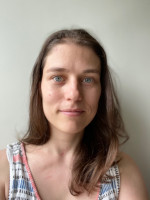
Lucie Bittner is a teacher in bioinformatics, molecular evolution and microbiology, and a researcher in evolutionary and environmental genomics. In 2009, she obtained a doctorate in Systematics and Evolution, at the Muséum National d'Histoire Naturelle in Paris. After post-doctoral contracts in France and Germany, she joined Sorbonne University as a lecturer in 2013. She has been co-leader of the Atelier de BioInformatique team since 2019 at the laboratoire Institut de Systématique, Évolution et Biodiversité (ISYEB, UMR 7205), and is a junior member of the Institut Universitaire de France. since 2020. She is interested in the diversity, evolution and adaptation of non-model organisms and more particularly microorganisms in their environment. She studies planktonic communities and their interactions and impacts in ecosystems using systems biology methods. Member of the Tara Oceans expedition (2009-2013), she has been working, among other things, since 2010 on data at the interface between molecular biology, bioinformatics and oceanography.
-
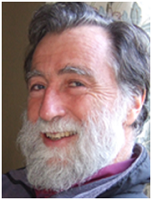
Richard BLIGNY (1945-2024) was Research Director of the CNRS. Its activity took place at the Laboratoire de Physiologie Cellulaire et Végétale (LPCV) of CEA-Grenoble (Joint Unit CNRS, CEA, INra and Université Grenoble Alpes) and focused mainly on studying the role of metals, carbonaceous nutrition and the response to various deficiencies in plant cells. The study of carbon stress led him to propose and develop the concept of autophagy in plants and to analyse certain aspects of their energy metabolism, particularly with regard to the renewal of ATP. In order to carry out physiological and biochemical analyses that disturb cellular functioning as little as possible, he made extensive use of Nuclear Magnetic Resonance (NMR) in vivo, helping to develop this technique, and in 1989 he created a laboratory at the Col du Lautaret to study the functioning of mountain plants and their ecology. From 2000 to 2005, he managed the Joseph Fourier alpine station in Lautaret, which brings together this laboratory and a century-old alpine garden open to the general public.
-
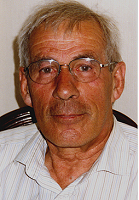
Jacques Blondel is Director of Research Emeritus CNRS at Centre d'Écologie Fonctionnelle et Évolutive (CEFE) de Montpellier... Since the beginning of his career, he has been interested in the mechanisms of regulating biological diversity in space and time, and has developed a nested approach to research on the scale of fauna, species assemblages and populations, using the Mediterranean area as a field of investigation and birds as a study model. The remarkable heterogeneity of Mediterranean landscapes has led him to analyse in detail the mechanisms of adaptation to habitat diversity, developing within the research team he has created integrated approaches combining demography, genetics, evolutionary ecophysiology and ethology. In particular, he focused on the respective roles of phenotypic plasticity and local adaptation by microevolution in the analysis of responses to selection regimes induced by different habitat conditions as well as by several components of global change. Author of nearly 350 articles and 7 books, he has also been involved in current issues related to biodiversity (he was president of the Conseil Scientifique de l’Institut Français de la Biodiversité) and relations between humans and non-humans, which he developed in a book L'archipel de la Vie, an essay on biological diversity and an ethics of its practice (Buchet-Chastel, 2012).
-
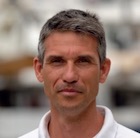
Marc Bouchoucha is an agricultural engineer and holds a doctorate in oceanology. He was recruited in 2006 at IFREMER and currently works in the Laboratoire Environnement Ressources Provence Azur Corse in La Seyne/Mer (Var). After having worked for several years on environmental monitoring of the Mediterranean coastal marine environment, he now conducts research in restoration ecology, particularly in highly anthropized environments (ports, dykes, outfalls, etc.). In general, his research projects focus on the study of the ecological functioning of urban marine areas, on the adaptation of species to these particular ecosystems and on the evaluation of the efficiency of the ecological restoration actions undertaken. This work involves in situ observation, laboratory analyzes and modelling.
-
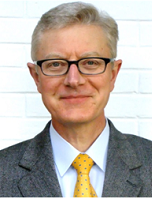
Philippe Bougeault's career has been devoted to research in weather forecasting, numerical modelling and field measurement campaigns. He headed the Research Department of the European Centre for Medium-Range Meteorological Forecasts (Reading), then the Centre national de recherche météorologique (Toulouse). He is currently scientific advisor to the President of Météo-France.
-
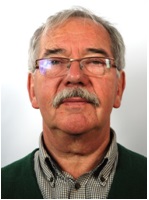
Marc Boulon was professor and then professor emeritus at the Université Joseph Fourier, now Université Grenoble Alpes, where he spent his career. He has taught aspects of mechanics (rational, material resistance, soils, rocks, numerical modelling), co-organized advanced training courses for geotechnical engineers. His research, at Laboratoire 3SR, often in partnership with French or foreign laboratories, focused on hydro-mechanical constitutive and numerical modelling, applied to structures involving static or cyclic contact between geo-materials. In particular, pile foundations, rock-dam contact, tunnels, underground storage containment are treated. He has supervised nearly 50 theses, published about 100 articles in international scientific journals, presented numerous papers at international conferences, and has himself organized international conferences. He co-produced the monograph "Mechanics of Geomaterial Interfaces", he is a member of French and foreign learned societies.
-
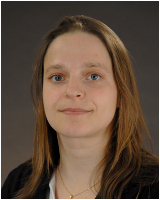
Engineer of the École de Physique du Globe de Strasbourg (2000) and Doctor of Geology of the École des Mines de Paris (2005), I focused my research on the theme of ground movements triggered by earthquakes. Using a numerical modelling approach (mainly finite differences), I analyse the causes behind the onset of this type of instability. I am now a research fellow at IFSTTAR.
-
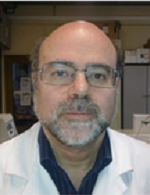
Alain Boussac, CNRS Research Director, is interested in the structural-functional relationships within the photosystem II (PS II) of chloroplasts, an essential complex for photosynthesis. understanding all the stages of the photosynthetic process from protein to the cell and then to the entire organism is crucial to addressing the problems associated with environmental change through the development of effective bio-inspired artificial systems in the production of carbon-free energy. The project of the team led by Alain Boussac consists in characterizing and understanding the stage of the reaction mechanism in which water is oxidized. The project involves biological, spectroscopic (mainly Electronic Paramagnetic Resonance) and thermodynamic approaches. Overall, this involves combining enzymology and spectroscopy with the production of modified enzymes either by directed mutagenesis or by biosynthetic or biochemical means. The project also involves collaborations with several laboratories, some of which are foreign, among the best in their field. The ultimate goal is to make a significant contribution to the field of bioenergy.
-
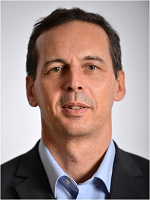
François Bouttier is General Engineer of Ponts, Eaux et Forêts, assigned to the CNRM (Centre National de Recherches Météo-France et du CNRS). Among other work, he developed improvements to the forecasting system of the Centre Européen pour les Prévisions Météorologiques à Moyen Terme (CEPMMT), led the development of the AROME forecast model for Météo-France, and designed the AROME ensemble forecast system. He is a recognized researcher in data assimilation and atmospheric modelling. He is the author of about thirty scientific articles on numerical weather prediction in peer-reviewed journals. He teaches at various universities and engineering schools, and has published widely used courses in data assimilation. He has directly supervised some fifteen theses and post-doctoral contracts, the data assimilation research team (CEPMMT), as well as the Météo-France numerical forecasting group. He is also the media contact point on weather change issues.
-
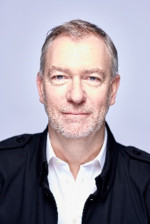
Chris Bowler is research director at the CNRS and director of the Plant and Algae Genomics laboratory at Institut de biologie de l'École normale supérieure in Paris. He obtained his doctorate from Ghent University in Belgium, followed by postdoctoral studies at Rockefeller University in New York. In 1994 he established his own laboratory working on signaling in higher plants and marine diatoms at the Stazione Zoologica in Naples, Italy, and in 2002 he took up his current role in Paris. He has been a member of EMBO since 1995, received the CNRS silver medal in 2010, the ERC Advanced Awards in 2012 and 2018 and the Louis D Foundation prize from the Institut de France in 2015. In 2018 he was elected member of the Académie d'Agriculture de France. His main research interest is the understanding of the response of plants and marine diatoms to environmental signals, through functional and comparative genomics. He is one of the scientific coordinators of the Tara Oceans project aimed at exploring the biodiversity, ecology and evolution of plankton in the world's oceans.
-
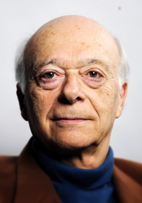
Jean-Claude Bregliano is an honorary university professor. He began his university career in Orsay in 1960. In 1967, he left with Philippe L'Héritier to Clermont-Ferrand to found the Laboratoire de Génétique de l'Université Blaise Pascal and a course in Genetics. He took over the management of the company in 1973. This laboratory will discover in the Drosophila and for the first time in the animal kingdom, a family of transposable elements. He leads the grouping of isolated teams of young biologists, which led to the creation in 1983 of an Associate Research Unit at the CNRS, the direction of which he shares with Jean-Pierre Dufaure. In 1990, he moved to Marseille-Luminy where he created a genetic team within the Institut de Biologie du Développement. This team showed, for the first time in a metazoan in toto, that moderate doses of gamma irradiation stimulate homologous recombination. An effect subject to transient epigenetic transmission. From 1995 to 2000, J-C Bregliano directed the doctoral training in Biologie Cellulaire, Biologie Structurale et Microbiologie, which included a large number of laboratories in PACA (France). In addition to the publications of his laboratories, he is co-author of a chapter in the book "Mobile Genetic Elements" published by the Acad Press in 1983, as well as 3 articles in the Encyclopædia Universalis. He is the author of the blog www.lespiedsdansleplat.me
-
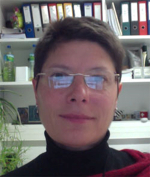
Doctor in Cellular and Molecular Biology (1997), Cécile Breyton is Research Director at the CNRS. Her scientific career has taken her successively to the Institut de Biologie Physico-Chimique (Paris), the Max-Planck Institute für Biophysik (Frankfurt) and Institut de biologie structurale (Grenoble) where she has been in charge of a team since 2016 and Deputy Director since 2017. The main focus of his work is the study of the stability of the structure of membrane proteins. In particular, she determined the role of delipidation in the inactivation of membrane proteins manipulated in detergent solution and determined by electronic crystallography the first structure of the translocon, a ubiquitous protein in living organisms that allows certain proteins to pass through the membranes. She then focused on the development of new fluorinated surfactants to manipulate membrane proteins in solution. In recent years, she has been particularly interested in elucidating the molecular mechanisms of bacterial wall perforation by phages during the early stages of bacterial infection by phages, the viruses that attack them.
-
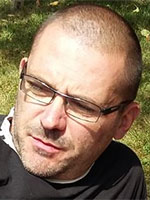
Laurent Briançon is a lecturer at the laboratoire SMS-ID since 2014. Lecturer at the Conservatoire des arts et métiers from 2003 to 2012, he is confronted with the future problems of the engineering students he trains and becomes project director in the Antea group design office. Laurent Briançon is conducting experimental and partnership research in the field of soil reinforcement and geosynthetics. He was heavily involved in the national ASIRI (Amélioration des Sols par Inclusions Rigides) project from 2005 to 2012 and participated in other research projects in the field of soil reinforcement (Rufex, GeoInov). It collaborates with university specialists in numerical modelling to propose complete solutions combining experimentation and modelling. Laurent Briançon was one of the curators of the exhibition "Les dessous de grands travaux" at the Musée des arts et métiers (2013 - 2018). Director of LabCom PITAGOR (Plateforme d’Innovations Technologiques Appliquées aux Géosynthétiques des Ouvrages Renforcés) since 2015, he has been pursuing his activity by developing laboratory experiments and proposing geotechnical auscultations of real structures.
-
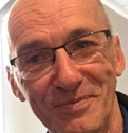
Jean-François Briat is Honorary Research Director at the CNRS. An agricultural engineer at ENITA in Bordeaux and a doctor of state in cellular and molecular biology (UJF Grenoble), he began his research in Professor Mache's laboratory at UJF on the study of the structure and functioning of the transcription apparatus for plant chloroplasts. He then contributed to the analysis of prokaryotic transcription systems in Professor Chamberlin's laboratory at the Université de Berkeley. Back in Grenoble, he began studying iron metabolism in higher plants. The first part of this study concerns ferritins, proteins that store iron in a soluble, bio-usable and non-toxic form. This work has greatly contributed to defining the concept of biofortification used today by many laboratories to increase the amount of iron in genetically modified plants. In a second step, he undertook the analysis of iron deficiency and transport of this metal, by creating an ATIPE team from the CNRS in Montpellier, in the laboratory of Prof. Grignon (currently Laboratoire de Biochimie et physiologie moléculaire des plantes (B&PMP)). During this new phase two major molecular breakthroughs were made by characterizing the iron transport systems of the plant kingdom. Some of this fundamental research work has been transferred to more applied INRA research laboratories, making it possible to: (i) test different hypotheses of plant biofortification to improve animal and/or human diets, and (ii) measure the impact of changes in iron homeostasis in plants on the biodiversity of microbial communities in the rhizosphere. Elected corresponding member of the Académie d'Agriculture de France in 2015, he headed the département de Biologie Végétale of INRA from 1999 to 2002 and the UMR Biochimie et physiologie moléculaire des plantes in Montpellier from 2007 to 2012.
-
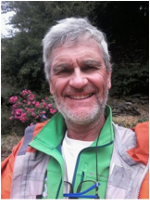
After studying biochemistry (Biochemistry Engineer, INSA Lyon, 1984) and microbiology (DEA in soil microbiology, Université de Lyon II, 1984), Renaud Brouquisse completed a doctorate in the Laboratoire de Physiologie Cellulaire Végétale (CENG-CEA, Université de Grenoble, 1987). After a post-doctoral internship at East Lansing (University of Michigan, 1987-88), he joined INRA in 1989 and developed research on the response of plants to abiotic constraints (carbon deficiency, hypoxia, heavy metals) at the Station de Physiologie Végétale de Villenave d’Ornon (INRA Bordeaux) until 2004, then at the Laboratoire de Physiologie Cellulaire Végétale (CEA, Grenoble). Since 2006, he has been part of the Symbiose et État Redox de la Cellule at theInstitut Sophia Agrobiotech (INRA de Sophia Antipolis), where he conducts research on the role of nitric oxide (NO) in the establishment and functioning of nitrogen-fixing symbiosis in legumes, as well as on the adaptation of cultivated legumes to environmental constraints.
-

Fanny Brun is a glaciologist, specialist in Asian glaciers. His thesis, defended in 2018, focused on the influence of detrital cover on the mass balance of glaciers in Asia. Its research approaches combine spatial remote sensing and field measurements to answer glaciological questions. Fanny joined the IRD in 2020. In this context, she is interested in research issues related to development, particularly in Nepal, and to a lesser extent in Tajikistan. His current work focuses on the estimation of precipitation in mountain areas and the influence that the phase of precipitation can have on the mass balance of glaciers. They take place in collaboration with many partners, in Nepal, in France, and in other universities, which provide varied expertise on climate, meteorology or even specific instrumentation.
-
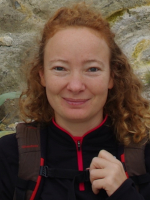
-
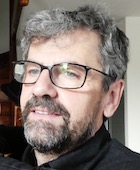
After having been a researcher at the CNRS, Michel Campillo is professor of geophysics at the University of Grenoble. He is a member of the Académie des Sciences and of the Institut des Sciences de la Terre (ISTerre). Michel Campillo is interested in both the processes responsible for earthquakes and the seismic waves that reveal the structure of the Earth. He has studied major earthquakes but also the phenomena of transient deformation highlighted in recent years. He proposed innovative methods for imaging the Earth from ambient seismic noise and multiply scattered waves. His current work focuses on the temporal monitoring of the mechanical properties of rocks associated with tectonic deformations. https://fr.wikipedia.org/wiki/Michel_Campillo
-
CARLIER Antoine Researcher in benthic ecology at LEBCO (Coastal Benthic Ecology Laboratory), IFREMER
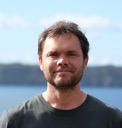
Doctor in benthic ecology in 2007 (from the Pierre et Marie Curie University), specialist in the impact of renewable marine energies on the seabed, Antoine Carlier leads observation and experimentation projects on trophic structure and functioning anthropized coastal benthic ecosystems. Researcher in benthic ecology at LEBCO (Coastal Benthic Ecology Laboratory),IFREMER.
-
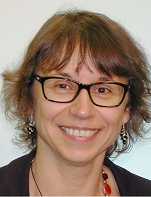
Anne-Marie Cassard is a Research Fellow at the INSERM dans l’Unité Inflammation, Chimiokines & Immunopathologie, U996, at the Université Paris-Sud and attached to the Université Paris-Saclay. The team she co-directs with G. Perlemuter, entitled Microbiote intestinal, macrophages et inflammation hépatique, is interested in the role of the intestinal microbiota in the susceptibility to develop liver damage during nutritional diseases and in particular in alcoholic liver disease and metabolic steatopathy (liver disease associated with overweight and obesity). The research team is supported by the Antoine-Béclère Hospital's hospital services, including the gastroenterology and nutrition department headed by Professor G. Perlemuter, which is a close collaboration between basic research and the clinic that promotes the emergence of translational research projects that aim to identify the bacteria or products manufactured by these bacteria involved in protecting against liver damage during alcohol consumption or in obese people. In 2016, A. M. Cassard co-authored with G. Perlemuter a book for the general public on the intestinal microbiota « les bactéries des amies qui vous veulent du bien », published by Solar. This book received the Science for the Best Popularization of Science Award in 2017.
-
Julien Cattiaux has been a research fellow at the CNRS since 2014. He works at the Centre National de Recherches Météorologiques (CNRM), a laboratory based at the Météo-France site in Toulouse. It studies the effect of climate change on meteorological variability in general, including changes in atmospheric circulation and the evolution of extreme events.
-
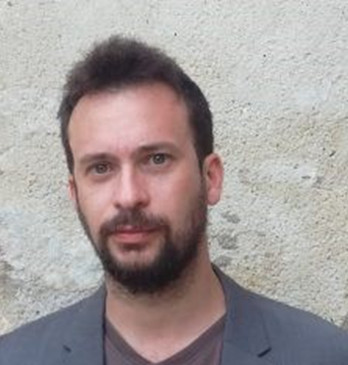
Julien Caudeville is responsible for the surveillance program for pathologies linked to endocrine disruptors at Santé publique France. His area of research focuses on environmental health, chronic disease mapping and exposure modelling. In France, he leads several research projects and develops several collaborations at the international level on the spatial aspect concerning the fields of epidemiology and exposure assessment. He developed the PLAINE (Environmental Inequalities Analysis System) platform, a GIS-based modeling platform to quantify human exposure and the spatial relationship between exposure, socio-economic and health data. He actively participates in the work of the various national plans in the field of environmental health, for which he notably coordinated the working group aimed at building the Quality Indicator of Environments for the Population (IQUALE). He is also responsible for the spatial statistics teaching unit at the Conservatoire National des Arts et Métiers (CNAM) in Paris.
-
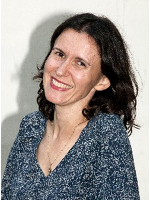
After an interdisciplinary training in social sciences and about ten years of teaching in economic and commercial preparatory classes, Catherine Cavalin coordinated the survey Événements de vie et santé (EVS) at the Direction de la Recherche, des Études, de l’Évaluation et des Statistiques (DREES) of the Ministry of Health. This survey focuses on the relationship between violence suffered and health status, the subject of her doctoral thesis in sociology (defended in 2016). From 2009 to 2012, she worked on the relationship between health, work and employment at the Centre d'études de l'emploi et du travail. From 2012 to 2017, in the ERC SILICOSIS team (Centre d'études européennes de Sciences Po), Catherine Cavalin produced unpublished data, combining statistical sources (existing or built ad hoc) and qualitative survey materials, to shed light on correlations between working and living conditions and various unexplained chronic diseases. In 2017-2018, several publications (in social sciences and medicine) are to be published: on the etiology of diseases, on investigation methods and on the socio-environmental definition of the diseases studied (e. g. rheumatoid arthritis, sarcoidosis, systemic scleroderma). See: http://www.sciencespo.fr/silicosis/fr/la-page-d-accueil. Since September 2017, Catherine Cavalin has been a policy officer at the Human Rights Defender at IRISSO.
-
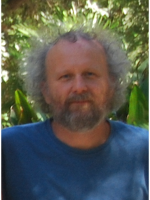
Bruno Chauvel is a researcher in the Département Environnement Agronomie de l’Inra. The overall objective of his work is to design and evaluate sustainable multi-species cropping systems based on integrated pest management to control weed populations. To do this, it seeks to identify the functional traits that allow weed species to succeed or become rare in the various current cropping systems and to understand the changes observed in populations (changes in emergence dates, herbicide resistance, etc.). He is also interested in the invasion processes in plots cultivated through the case of sagebrush ragweed (Ambrosia artemisiifolia L.).
-
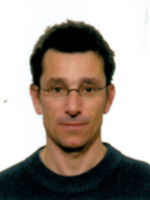
Researcher since 2005, currently at CNRM (Centre National de Recherches Météorologiques), my main theme is the study of tropical cyclones and their sensitivity to climate change. To this end, I carry out high spatial resolution climate simulations that make it possible to represent these small-scale phenomena. I have previously discussed the study of Indian and African monsoons and mid-latitude storms in the North Atlantic.
-
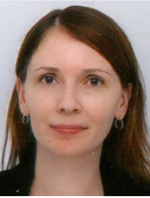
Victoria Chiu, from The Institut de Droit de l'Environnement, has been a lecturer in public law at the Université Jean Moulin Lyon 3 since September 2015. Specialized in water law, she defended her doctoral thesis in November 2014, on "La protection de l'eau en droit public. Comparative study of Spanish, French and Italian law". Since then, she has published several articles and spoken at numerous conferences in France and abroad. Its scientific contribution consists more particularly in comparing national laws applicable to water, in order to build a reflection that goes beyond the limits of a single legal system.
-
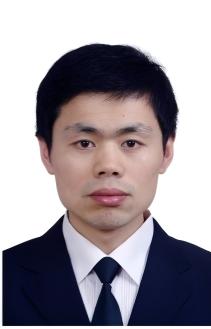
Chu Zengyong is a professor and doctoral supervisor at the National University of Defense Technology (NUDT), and a recipient of the Hunan Provincial Outstanding Youth Fund. He obtained his Ph.D. from NUDT in 2003 and has been teaching and working there since. In 2008, he spent a year as a visiting scholar in the Department of Chemistry at the University of Oxford, UK. His main research focuses on flexible sensing materials and devices, as well as wide bandgap semiconductor materials and devices.
-
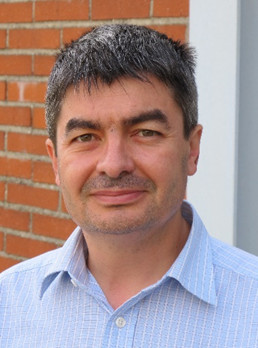
Philippe Ciais is director of research at the CEA, Laboratory of Climate and Environmental Sciences LSCE(CNRS/CEA/CEA, UVSQ - Paris-Saclay University), Pierre Simon Laplace Institute. A researcher at the Laboratoire des Sciences du Climat et de l'Environnement, he studied how the planetary carbon cycle is influenced by human activities and its feedback on the climate. His work has led to a better understanding of the distribution of natural carbon sinks in vegetation and soils. Philippe Ciais notably coordinated the implementation of the European measurement and observation network ICOS, aimed at quantifying greenhouse gas emissions and carbon sinks across the European continent. He has also developed compact or complex models of terrestrial ecosystems to identify the factors that determine carbon exchanges between vegetation and the atmosphere.
-
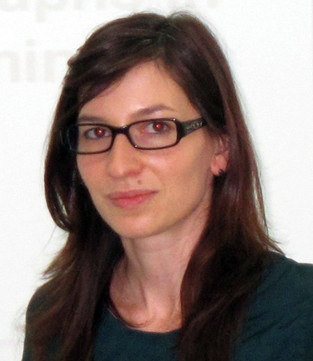
Céline Clauzel has been a teacher-researcher in environmental geography since 2009, first attached to the THEMA laboratory in Besançon, then to the LADYSSlaboratory in Paris. She is interested in biodiversity issues approached from the angle of ecological networks and their integration into territorial planning. His work combines spatial modeling and naturalistic data analysis methods. She works in a multidisciplinary approach (geographers, computer scientists, ecologists, anthropologists) associating scientists and operational actors. She participates in the development of the Graphab software dedicated to the spatial modeling of ecological networks and in its training. His most recent work focuses on the evaluation of the connectivity of networks of ponds (turquoise grid) and on the contribution of vegetated micro-spaces to urban connectivity, in particular that of vegetated schoolyards. She is the author of more than 30 articles in peer-reviewed journals.
-
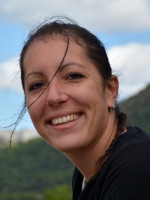
Marion Cordonnier did her thesis at LEHNA (Université de Lyon), then spent a year at ESE (Université Paris-Saclay) as a Research Engineer. She is now a post-doctoral fellow at the University of Regensburg, Germany, in a laboratory whose themes revolve mainly around the ecology and evolution of social insects, in the au Département de zoologie / biologie évolutive. In recent years, his research has focused on the impact of global changes (urbanization, climate change and biological invasions) on interactions between species, including in particular genetic exchanges, predation relationships and competitive interactions. His work mobilized a variety of tools, combining for example landscape genetics, behavioral biology, and chemical ecology. His research mainly concerned ants, and occasionally other biological models (birds, mammals).
-
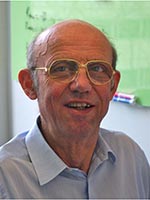
François Henri Cornet obtained a PhD from the University of Minnesota in "Mineral Engineering" and a PhD in physical sciences from the Université Paris 7. Most of his research career has been spent at the Institut de Physique du Globe de Paris, where he headed the rock mechanics team at the seismology laboratory. His work has involved the measurement and study of stress fields in the earth's crust and fluid-rock interactions. He has participated in the development of high temperature geothermal energy but also in the study of deformations on volcanoes. Through various European programs he spent ten years developing the Corinth Rift Laboratory, which focused on the in situ study of fault mechanics. He joined the Université de Strasbourg in 2007 and observatoire de sciences de la Terre where he developed the teaching of geomechanics. He is the author of more than 150 publications in various journals or conference proceedings and published in 2015 the textbook "Elements of Crustal Geomechanics" at Cambridge University Press.
-
CORNIC Gabriel Honorary Professor, Laboratoire d’écophysiologie des plantes, Université Paris-Saclay
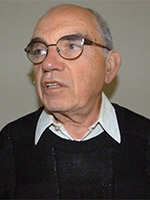
Gabriel Cornic was a professor at the Laboratoire d’écophysiologie des plantes at the Faculté des sciences d’Orsay (université Paris sud XI). His work has focused on photoinhibition, the rapid effects of water stress on foliar photosynthesis (including electron flows between IEHP and PSI) and the inhibition of respiration by light. He is currently still working in the plant ecophysiology laboratory where his three areas of interest have been: the study of cyclic electron flows around PSI in plants suffering from drought, the examination of the regulation of PTO (plastidial terminal oxidase) in alpine plants and the inhibition of respiration by light.
-
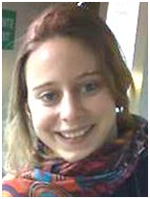
Lucile Courtial is a biologist specializing in the relationships between organisms and their environment. She is currently completing a PhD on the combined effects of UVs and global warming on Scleractinian corals at Centre Scientifique de Monaco. A graduate of the Ecole Normale Supérieure de Paris, this young researcher is passionate about the ocean. Her passion comes from her childhood during which she lived 4 years on the island of Mayotte in the Indian Ocean. Sent by coral reefs, she decided to learn more about corals through her studies and many trips. Her interest led her to follow long internships at the Institute of Marine Science in Townsville, Australia; at the University of Reunion Island and to work at the IRD in Nouméa, New Caledonia, during her PhD. Today, it wants to use its knowledge and skills to serve the environment in order to limit anthropogenic impacts on the oceans and protect them.
-

Alexandra Courtin-Nomade is Professor of Geosciences at the Université de Limoges, assigned to the Laboratoire PEIRENE axis 3-GRESE. His work is devoted to the study of metal contamination in the critical area within solid compartments (rocks, soils, sediments) using crystallochemistry, mineralogy and geochemistry tools. It is particularly interested in products generated by mining and industrial activities (waste rock, slag). Within the framework of the chaire GRQE (Grandes Retenues et Qualité de l’Eau), for which she coordinates the "sediments" axis, she is interested in the roles of dams on sediment continuity as well as their role as sediment reservoirs, sediments that can be both a trap and a source of contaminants. This work involves knowledge of sediment mineralogy and the study of processes at interfaces.
-
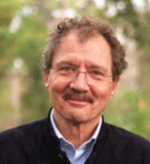
Patrick Criqui is an expert economist on economic modeling for energy and energy transition scenarios. His early research focused on the economics of solar energy and then modeling international energy markets. He then developed a long-term global energy model, the POLES model, now used by the European Commission and various governments or companies in Europe, for the economic analysis of climate policies. He was also lead author of the IPCC Working Group No. 3. As part of the implementation of the Paris Agreement, it is now focusing its work on monitoring national policies for deep carbon decarbonisation and carbon neutrality. Member of the Membre du Conseil économique pour le développement durable with the Minister of Ecology since 2008, he has been an expert in scenarios in the Débat National sur la Transition Énergétique (2013) and in the development of the Stratégie Nationale de Recherche, in the energy workshop (2014).
-
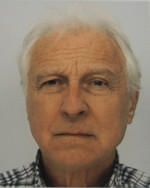
Doctor of Pharmacy, Biologist of Hospitals, Intern in Pharmacy, then Associate Professor of Universities (Faculté de Médecine, UGA) and Hospital Practitioner at CHU de Grenoble (Laboratoire de Bactériologie – Hygiène): these activities led me to teach Bacteriology Medical in numerous university and paramedical training courses and to invest in the diagnosis of infectious diseases and the epidemiological surveillance of the hospital environment. My research activities have concerned in particular Pseudomonas aeruginosa, an environmental bacteria and the epidemiology of antibiotic resistance. As for Legionella pneumophila, and legionellosis its clinical translation, they have marked my entire career since their discovery and have allowed me to grasp a new bacterial world. As a member of the Conseil scientifique de l’Agence de l’eau Rhône-Méditerranée, I was able to closely follow the evolution of fundamental and technical knowledge for a microorganism and an infection that is still very topical. In this context, as President of the Comité de Lutte contre les Infections Nosocomiales (CLIN)(CLIN) at the University Hospital of Grenoble, I was confronted almost daily with the fight and prevention of nosocomial legionellosis, one of the institutional priorities.
-
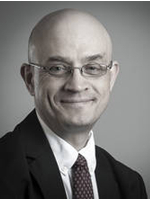
Damien Cuny is an ecotoxicologist and Professor at the Faculté de Pharmacie à l’université de Lille. He belongs to the environmental biomonitoring group within the IMPECS team: Impacts de l’Environnement Chimique sur la Santé Humaine. His work focuses on biomonitoring air quality (outdoor and indoor) through the use of lichens and higher plants. The objective of its work is to assess the risks that air pollution poses to the environment and health. Its results are used in particular in the context of a Système d’Information Géographique specifically set up by its group to study the links between health and the environment (SIGLE).
-

Doctor in benthic ecology at IFREMER, Amélia has been the French delegate since 2013 to two working groups of the International Council for Exploration of the Sea: the WGITMO (Working Group on the Introduction and Transfer of Marine Organisms) and the WGBOSV (Working Group on Ballast and Other Ship Vectors). His research focuses on intertidal, rocky and urban ecosystems.
-

Mathematician and physicist, Antoine Danchin immersed himself in experimental microbiology at the beginning of the 1970s. To understand the rules of gene organization in bacteria, he collaborated with artificial intelligence specialists in 1985. The success of this work convinced him that the time had come to explore genomes as totalities, with the help of a decisive effort in information science. As early as 1991, this led to a first discovery: half of the genes identified by sequencing in the genome of a model bacterium were totally unknown.
-
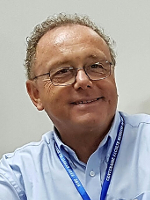
Professor Emeritus, Université Grenoble Alpes (UGA). Professor of Toxicology (Pharmacy UFR, UGA). Hospital medical practitioner at Grenoble University Hospital . Head of the Unité de Toxicologie Clinique (CHU Grenoble) (1984 - 2006). Head of SAMU 38 (2007 - 2017). Specialist in Anesthesia-Resuscitation and Emergency Medicine. Major part of career in clinical toxicology and toxicovigilance. Numerous publications and books in Toxicology. Numerous participations in expertise in the field with health agencies.
-

After obtaining a Doctorate of State in Physical Sciences (1988) from the Université de Poitiers, Joseph De Laat was appointed Lecturer at the IUT Chimie (Université de Poitiers) where he taught process engineering. Professor at the Université de Poitiers since 1994, he teaches chemistry and water treatment (urban and industrial wastewater, process water, drinking water) at l'Ecole Nationale Supérieure d'Ingénieurs de Poitiers (ENSIP). He was Director of the Eau et Environnement Specialty at ENSIP from 2003 to 2009 and then of the Water and Engineering Specialty at ENSIP from 2009 to 2014. Researcher at the Laboratoire de Chimie et Microbiologie de l’Eau (now IC2MP) since 1982, Joseph De Laat has studied the mechanisms and kinetics of oxidation of organic and inorganic compounds in aqueous media by oxidants conventionally used in water treatment (chlorine, ozone, chlorine dioxide, monochloramine) and by various advanced oxidation processes that generate highly reactive radical entities (hydroxyl radicals).
-
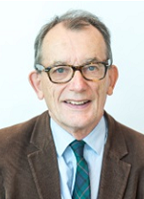
Ghislain de Marsily, a civil mining engineer, passed his state thesis at Paris VI in 1978 and taught applied geology at the Ecole des Mines de Paris and then at the Université Paris VI. Its field of activity, mainly centred within the METIS (Milieux environnementaux, transferts et interactions dans les hydrosystèmes et les sols) research unit, concerns groundwater, global water resources, their protection and management, the management of waste (nuclear, industrial or domestic) buried in the ground, and sustainable development for which water is a fundamental element, affected by climate change.He is the author of several hundred publications in major international scientific journals and several books, including Hydrologie quantitative (Masson, 1981), Flow and Tansport in FracturedRockes (Acad. Press, Orlando, 1993), L’eau (Flammarion, 1995, 2000), L’eau, un trésor en partage (Dunod, 2009). His career has been rewarded with numerous prizes and high distinctions.
-
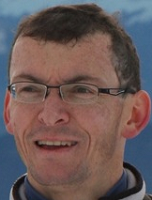
I work at Laboratoire de glaciologie et géophysique de l’environnement on the reconstruction of past climates and climatic forcings using "archived" physico-chemical markers in sediments, mainly ice. These markers are natural isotopes, whose chemical behaviour, or isotopic fractionation due to their mass difference, is sensitive to climatic conditions ('isotope thermometer'), or to solar forcing (cosmogenic isotope production). Now part of the Institut des géosciences de l’environnement.
-
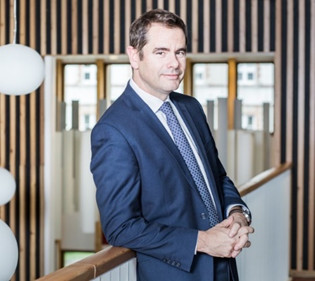
Sébastien Denys is an agricultural engineer by training and authorized to direct research. His expertise is centered on the impact of the environment on human health and the health of ecosystems. In 2016, when Santé publique France was created, he was appointed Director of the Health-Environment Department and then was commissioned to create the Health-Environment-Work Department in 2018, which he has managed since then. The missions of its Department aim to better understand the impact of the determinants of the general or professional environment on health. As such, it actively participates in the work of the various plans or national plans in the field of environmental health or occupational health. It is also actively involved in the European PARC partnership coordinated by ANSES, which aims to provide innovative risk assessment for chemical substances. He is also chairman of the “climate change and health” committee of the international association of public health agencies – IANPHI.
-
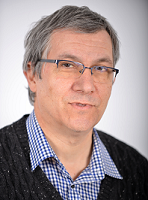
In 1980, I entered the research centre of what would later become Météo-France, after studying at the Ecole Polytechnique and the Ecole Nationale de la Météorologie. I participated in the development of the institution's successive climate simulation models. Ten years later, I was appointed head of the team responsible for promoting the climate model from the weather prediction model. My activity then diversified, through numerous international projects, towards the issues of regionalization of climate change and seasonal forecasting. In 2006, I supported an authorization to conduct research on this last theme. In 2016, I was appointed head of the team responsible for setting up and improving the seasonal forecasting system for Météo-France.
-
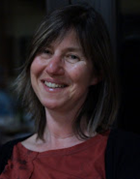
Laurence Després is a professor at the Université Grenoble Alpes (UGA) and conducts his research at Laboratoire d’Écologie Alpine (LECA). She teaches evolutionary biology, ecology, adaptation genetics and molecular phylogeny, and is in charge of the Master of Biodiversité Ecologie Evolution (BEE) at the UGA, Dynamics and Biodiversity Modeling (DynaMo). She is interested in the evolutionary ecology of sustainable interactions (host-parasite or host-mutualist) and co-evolution, adaptation genetics and speciation, particularly in insects. His work combines genetic approaches with ecological, biochemical or behavioural analyses to test hypotheses on the nature of constraints on natural (or experimental) populations and on the evolution of complex adaptive traits. His most recent work focuses on the evolution of cocktail resistance to toxins produced by the bacterium Bacillus thuringiensis israelensis (Bti) in mosquitoes, and on the diversification of butterflies along altitudinal gradients in the Alps. She is the author of more than 70 articles in peer-reviewed journals and three book chapters, and has supervised 8 doctoral students.
-
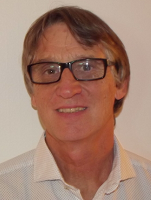
My career has been largely devoted to research in data assimilation within the framework of numerical weather prediction. In particular, I participated in the implementation of a new generation of assimilation systems at Météo-France in 2000, then to the use of the assemblies in assimilation at the end of the 2000s. I am now coordinating the activities of a group of researchers in data assimilation.
-
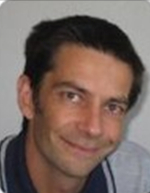
Benoît Dewandel has been a researcher at BRGM since 2002. He obtained his PhD in 2002 from the Université des Sciences et Techniques de Montpellier on the basement aquifers of Oman. From 2002 to 2007, he was part of the Centre Franco-Indien de Recherche sur les Eaux Souterraines (CEFIRES), a joint laboratory between BRGM and the National Geophysical Research Institute (Hyderabad, Télangana, India) specializing in the hydrogeology of basement aquifers. Since 2007, he has been leading several R&D projects on complex aquifers (basement, volcanics) at BRGM in Montpellier. His main research work focuses on conceptualizing the hydrogeological and hydrogeochemical functioning of complex aquifers, estimating their hydrodynamic parameters, including the development of appropriate mathematical solutions to model pump tests in these environments, the development of techniques for regionalizing these parameters, but also the development of decision support tools to improve the management of groundwater resources in basement aquifers. Together with his colleagues geologists and hydrogeologists, including Robert Wyns and Patrick Lachassagne, he contributed to the development of the modern concept of the stratiform basement aquifer and its validation in different countries or continents. His work has resulted in several scientific publications.
-
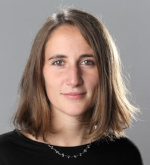
Alice Di Donna is a lecturer at the Laboratoire Sols, Solides, Structures et Risque (3SR) in Grenoble (France) and a professor at the Université Grenoble Alpes (UGA). After graduating with an engineering degree from the Politecnico de Turin (2009) and a Master's degree in Mechanics, Energy and Solid Modeling from the Université Joseph Fourier of Grenoble (2009), she obtained the title of Doctor of Research at the Laboratoire de Mécanique des Sols (LMS) at the EPFL of Lausanne (2014). Co-editor of a book and author of numerous scientific publications, her research activities focus mainly on the study of the behaviour of soils, rocks and soil-structure interfaces in non-isothermal conditions, the analysis (numerical and experimental) of coupled thermo-hydro-mechanical phenomena in geomaterials, geothermics and energy geostructures.
-
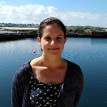
Carole Di Poi, holder of a doctorate in neuroethology from the Université de Saint-Etienne. She was recruited in 2017 at Ifremer and is currently working in the LEMAR research unit, on the Ifremer experimental site in Argenton -en-Landunvez. She conducts research in physiology and behavioral biology on the pelagic stages of marine bivalves subjected to a changing marine environment under anthropogenic pressure. She is developing research on the impacts of climate change, and in particular on the effects of ocean warming and acidification, on exploited marine organisms living on our coasts.
-
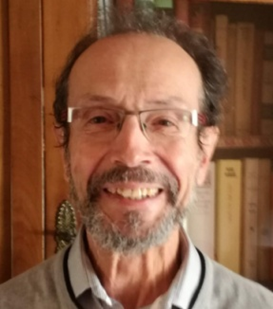
Pierre Dizengremel obtained a State doctorate in Natural Sciences from the l’Université Paris 6. After beginning his career at Paris 6 where he worked on the particularities of plant mitochondria, his appointment as professor at the University of Nancy, which became the University of Lorraine, led him to devote his research essentially to the mechanisms of the cellular response of trees to environmental constraints. He largely contributed to the foundation of a joint laboratory (UMR) with INRA in forest ecology and ecophysiology. Very involved in training, he directed the DEA in forest biology and then the master's FAGE (Forêt AGronomy Environnement) for many years. He was a member of the Steering Committee of the Resources, Processes, Products and Environment Doctoral School. On the more specific theme of the effects of ozone on plants, he directed an ANR program and collaborated within the framework of European contracts with many foreign universities. He is the author of 110 articles published in peer-reviewed journals, 10 book chapters and he has presented numerous communications at international conferences. He is Commander of the Order of Academic Palms and Professor Emeritus of the Université de Lorraine.
-

Jean-Baptiste Doré obtained his PhD in 2007 from the University of Rennes. He did his thesis work at France Telecom R&D (Orange Labs) on the design and decoding of LDPC codes. After an experience at NXP semiconductor as a signal processing architect for TV products, he joined CEA in 2009. Since 2019, Jean-Baptiste co-leads a transdisciplinary program dedicated to wireless technologies and linking semiconductor technologies, RF circuit and antenna design, and the definition of innovative digital systems for future wireless communication standards. Jean-Baptiste has published more than 90 scientific papers, is the principal inventor of 30 patents, and has been involved in the IEEE1900.7 standards group. Jean-Baptiste has received 3 best paper awards (IEEE ICC 2017, IEEE WPCN 2018 and Eurasip journal 2019).
-
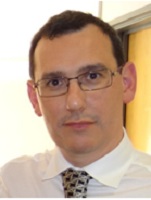
Thierry Douki is a researcher at the CEA within the Laboratoire SYMMES (SYstèmes Moléculaires et nanoMatériaux pour l’Energie et la Santé) of the Institut Nanosciences et Cryogénie (INAC), a federal research institute CEA-Université Grenoble Alpes. A chemist by training, he is interested in the formation and repair of DNA damage. His activities involve first of all the study of chemical mechanisms on isolated DNA or simple models. He also works at the cellular level through the development of sensitive and specific analytical tools, based in particular on mass spectrometry. He is interested in chemical genotoxic agents such as air pollutants, or physical agents such as ultraviolet radiation. In this field, he was particularly interested in the influence of the type of radiation on the nature of DNA damage. He is heavily involved in several photobiology societies and is an expert at ANSES.
-
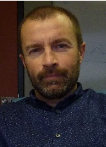
Researcher at CNRM since 1995 on the theme of modelling and understanding natural climate variability and change in response to human activities, Hervé Douville is also a member of the LEFE/IMAGO scientific committee of the INSU responsible for coordinating work on interactions between the atmosphere, ice and ocean at the national level, and has been helping since 2018 to coordinate the drafting of a chapter dedicated to changes in the water cycle as part of the next report of the first IPCC working group (AR6 WG1).
-
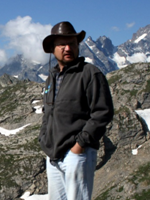
Rolland Douzet is Associate Professor (PRAG) at the UGA since 1998 on a specific profile : (1) Teacher at the UFR of Chimie-Biologie - (2) Botanical manager and deputy director of the Station Alpine Joseph Fourier (SAJF), Unité Mixte de Services (UMS) UGA/CNRS. He teaches botany and plant biology and supervises the CU of botany and plant ecology in Briançon. Within the SAJF, it sets up and manages a seed bank of more than 2,000 species (seed exchanges with more than 300 gardens around the world and with researchers). He has already carried out numerous missions for seed collection, plant collection and image bank building in many parts of the southern hemisphere: Patagonia, Chile, New Zealand, Australia. He is solicited for expert roles in research programs conducted at SAJF (plant determination, seed or sample collection, etc.) He is also involved in the writing of various books such as the Lautaret notebook: "Découverte botanique de la région du Lautaret et du Briançonnais" published in 2010.
-
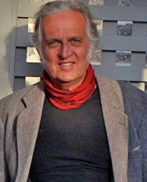
Emmanuel Drouet is a doctor of pharmacy and has been teaching microbiology at the Faculté de Pharmacie de Grenoble for more than 20 years. He is a Teacher-Researcher at the Institut de biologie structurale . He obtained his doctorate in clinical virology at the Université Claude-Bernard (Lyon) and practiced medical biology at the Institut Pasteur in Lyon. His group has been involved in clinical investigation for about ten years, particularly in the field of viral diseases. He is interested in host-pathogen relations, particularly in developing new diagnostic methods, and is the author of more than 80 publications and book chapters in this field. It is concerned about the influences (positive or negative) that the environment (in the broad sense) can have on human health.
-
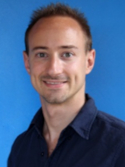
Frédéric Ducarme is a normalien, doctor in philosophy of ecology, and qualified as a university lecturer. He has completed a complete double-track in biology and in SHS, and his research lies at the intersection of the social and the biological. It is attached to the Muséum National d'Histoire Naturelle
-
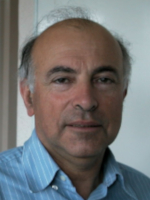
Geological engineer at the Laboratoire Central des Ponts et Chaussées until 2002, then Centre d'études techniques de l'Équipement of Lyon (now CEREMA) until 2005, then Conseil général de l'Environnement et du Développement durable until 2015.
-

A CNRS researcher at ISYEB since 2009, Marianne Elias completed her PhD in evolutionary biology in Montpellier, focusing on the morphological and genetic diversity of cassava in a traditional cropping system. She then did several post-docs, first in Finland on the ecology of ants, then in the UK on the ecology and evolution of mimetic butterflies in tropical America. Marianne Elias' current research focuses mainly on the diversification of butterflies and their adaptation to their environment in relation to their colourations. In particular, she is taking part in an interdisciplinary project on the evolution of transparency in butterflies. At ISYEB, Marianne Elias is co-leader of the "Diversification et adaptation aux échelles micro et macro évolutives" (DIVA) team.
-
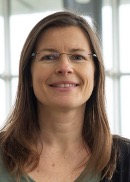
After a doctorate in biological oceanology from the Université de Bretagne Occidentale (UBO) on the development of the germ line and the control of reproduction in oysters, Caroline Fabioux carried out a post-doctorate between Ifremer of Brest and the Université de Caen on the RNA interference technique. Recruited in 2007 as a lecturer at UBO, she teaches genomics, physiology and developmental biology at bachelor's and master's levels and she conducts research on the impact of toxic microalgae on shellfish of commercial interest. through molecular physiology approaches. Since 2017, she has been co-head of the "Integrative physiology and adaptation of marine organisms: from gene to population" research team (60 people) at the LEMAR laboratory.
-
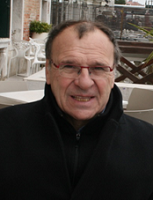
Denis Fabre is an engineer from the Ecole Centrale de Lyon, Doctor of Engineering (Applied Geology) and then holds an Habilitation to Direct Research from the Université de Grenoble. He made his career in Grenoble at the institut Dolomieu and then at the IUT de Génie civil, and participated in the creation of the first engineering school in France (Polytech-Grenoble), before joining the Chair of Geotechnics from Cnam, in Paris. His research at the Lirigm de Grenoble and then at the Cnam focuses on the mechanical properties of rocks, the geotechnical characterization of rock masses, the stability of underground structures and natural risks (slope stability, evolution of permafrost in the context of climate change) He has written about ten books and is the author of more than 130 publications. He is particularly active in learned geotechnical societies (Comités Français de Géologie de l’Ingénieur et de Mécanique des Roches) and is a member of the editorial boards of several journals (Revue Française de Géotechnique, Tunnels et Espace Souterrain, Géologues...). He was a member of the INERIS scientific commission. He is a member of the Scientific Council of the Parc naturel régional de Chartreuse , which he chaired for ten years. He is a member of the scientific council of the Auvergne-Rhône Alpes « Infrastructures Durables » (INDURA) cluster (INDURA). He has been President of the Association pour le Développement des Recherches sur les Glissements de Terrain since 2010.
-
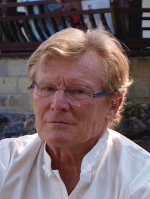
1. Academic background 1969: Aggregation of history 1970: Assistant of Modern History at the université des Sciences sociales de Grenoble 1993: Professor of Modern History at the université Pierre Mendès France, Grenoble 2 2. Institutional responsibilities At the université Pierre Mendès France in France: - Vice-President in charge of research at the université Pierre Mendès France in France (since 2007-2012) - Member of the Board of Directors of université Pierre Mendès France in France (1995-2003) - Member of the Scientific Council of université Pierre Mendès France (2007-2012) - Vice-President of the université Pierre Mendès France, in charge of training (1995-2000) In Grenoble University of Innovation: - Creator and coordinator of the LABEX "Innovation et Territoires de Montagne"- ITEM (2010-2012) This lab brings together researchers from different social science disciplines (history, geography, economics, management, law, STAPS, etc.) who have set themselves the objective of creating an internationally recognized centre of expertise on the Grenoble-Alpes site in the field of change and development in mountain environments. On the international scene: - Founding member and treasurer of the Association internationale d’histoire des Alpes (1995-2012) - Member of the Advisory Board of the laboratoire d’Histoire des Alpes, Mendrisio Academy of Architecture (Università delle Swizzera Italiana, Lugano) (2001-2011) - Member of the Steering Committee of NRP 48 (Programme National de Recherche) "Paysage et habitat de l’Arc alpin", Fonds National Suisse de la Recherche (2000-2007) Research activities Its research activities are organized around the history of the territories, and are divided into three fields: - Urban history, and more particularly the role of cities in the organization of territories - History of the Alps, in particular in relation with the Institute of Alpine History of the University of Lugano, of which I am one of the administrators - Social history of natural disasters, and the ways in which the territory is managed in the face of these disasters René Favier worked at the Rhones-Alpes Historical Research Laboratory - UMR CNRS 5190.
-
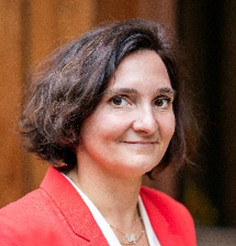
Clémence Fillol is head of the exposure monitoring unit at the occupational health and environment department of Santé publique France. She holds a doctorate in public health from the University of Paris Descartes (2010) and a doctorate in pharmacy. His work focuses on the characterization of population exposure, through the development and measurement of biomarkers. It has developed the French biomonitoring program which aims to determine the exposure of the French population to chemical substances present in the environment, to research the determinants of this exposure and to compare the results with those of foreign programs. This program was based in particular on the work of the Elfe cohort of the joint inserm/ineD unit and the Esteban study of Public Health France. It has also strengthened the links between the national program and other comparable international initiatives - in particular the HBM4EU projects and then the PARC partnership project. At the same time, this approach was developed to answer specific questions about local situations or exposure to specific compounds, such as with the PestiRiv study, which will answer the exposure to pesticides of populations living near wine-growing areas.
-
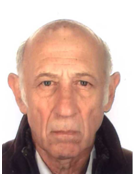
Etienne Flavigny is an engineer from the Ecole Centrale des Arts et Manufactures (1968) and holds a doctorate from the Université de Grenoble. His teaching activities at the Université de Grenoble have focused on the disciplines of Mechanics, Civil Engineering and Soil Mechanics / Geotechnics. He participated in and directed the Institut universitaire professionnel de Génie Civil in its creation. Another component concerns continuing training activities by developing sessions on calculation by the "finite element method" in geotechnics, on laboratory or in-situ tests in collaboration with the École des Ponts et Chaussées' continuing training. Other sessions also focused on Geotechnics in Earthquake Engineering. The research topics discussed at the laboratoire 3S-R by E. Flavigny focused on the experimental behaviour of soils on different stress paths: liquefaction, creep, swelling, or cyclic stress. This work has often been carried out in conjunction with industrial partners.
-
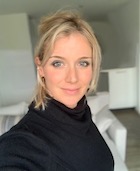
Elodie Fleury is an engineer in bioinformatics and modeling graduated from INSA Lyon in 2005. She then did a doctorate at Ifremer in Brest from 2006 to 2009, focusing on transcriptomic and physiological approaches developed on the cupped oyster undergoing summer mortality phenomena. After a post-doctorate in Canada at the Université de Laval in Quebec, she was recruited as a researcher at Ifremer in 2011, where she coordinates a national network for monitoring the shellfish performance of the cupped oyster, engaged by the Ministry of the DGAl (https://wwz.ifremer.fr/observatoire_conchylicole/Presentation). In 2016, she was appointed head of the Invertebrate Physiology laboratory at Ifremer in Brest, whose objectives are to study the interactions between bivalves and their environment in natural conditions or in the context of aquaculture. His work thus helps to understand the effects of the environment on the life history traits of these marine organisms, to improve the sustainability of aquaculture production, and to allow more sustainable exploitation of marine organisms in coastal social ecosystems.
-
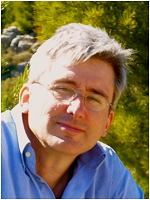
Jan-Bert Flor completed his higher education in the Netherlands at the University of Utrecht. After post-doctoral studies at the Department of Applied Mathematics and Theoretical Physics (DAMTP) at the University of Cambridge (UK), he was recruited as a Research Fellow at the CNRS and assigned to the Laboratoire des Ecoulements Géophysiques et Industriels (LEGI), in Grenoble in 1996, and then promoted to Director of Research in 2010.
-
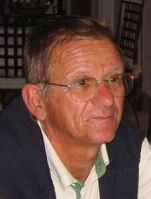
Jacques Fontan was a Professor at the Université Paul Sabatier in Toulouse. He created the Laboratoire d'Aérologie (associated with the CNRS) of which he was the director from 1982 to 1986. His research has focused on the dynamics and physico-chemistry of the lower atmosphere, with a particular focus on pollution problems. They have resulted in more than a hundred publications. He was one of the pioneers of research in this field in France and in the intertropical regions.
-
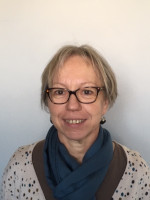
State Diploma of Doctor of Pharmacy, Université d’Auvergne-Clermont I, 1982 Doctoral thesis, U.E.R. of Exact and Natural Sciences, Université B Pascal-Clermont-II, 1987 Habilitation to Direct Research (HDR), Université d’Auvergne-Clermont I, 1993 POSTDOCTORAL INTERNSHIPS 1988 - 1989 University of Wisconsin, Medical School Madison, Wisconsin, U.S.A. 1991 - 1992 Institut Pasteur Paris, Laboratoire de "Génétique Moléculaire des Listeria". 1989 - 2002: Lecturer, UFR Pharmacie Clermont-Ferrand 2002 - actually: University Professor, UFR Pharmacie Clermont-Ferrand
-
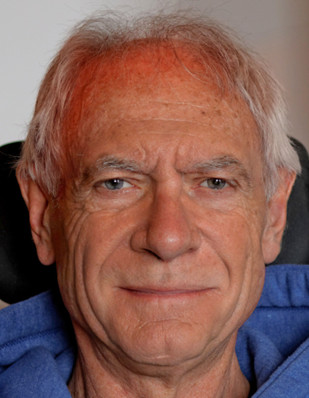
Yves Fouquart is a specialist in the interactions between electromagnetic radiation and the atmosphere, Professor at the University of Lille until his retirement in 2004. He actively contributed to the creation of the radiative transfer codes of the first climate models of the IPSL and Meteo France. He studied the properties of clouds and aerosols and their influence on climate. He directed the Atmospheric Optics Laboratory, participated in the Scientific Committee of the World Climate Research Program and in the drafting of the 2nd report of the IPCC published in 1995 and as such he is, with many others, co- winner of the 2007 Nobel Peace Prize.
-
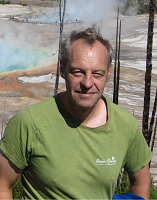
Bruno Franzetti is a research director at the CNRS. He heads an interdisciplinary research group at the IBS Institut de biologie structuraleUnité Mixte de Recherche (UMR 5075) created by CEA, CNRS and Université Grenoble Alpes, as well as a national research group (GDR) on Archaeology. His work aims to develop Archean biological systems to dissect complex cellular functions, develop new methods in structural biology and research new biocatalysts and drugs derived from the biodiversity of extremophilic microorganisms. He has been responsible for several research programs aimed at understanding the adaptation of microorganisms to extreme environments. In this context, he discovered and characterized several cellular machineries responsible for the targeted destruction of cellular components.
-
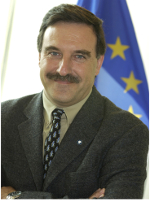
Yves Frenot began his scientific activity on the terrestrial ecology of the French sub-Antarctic islands (Crozet, Kerguelen, Amsterdam). His interest has focused on the role of man and climate change in the exceptional biodiversity of these southern islands, which are particularly sensitive to disturbances. He has carried out more than 15 missions in the past 20 years. He joined IPEV in 2003, where he served for 7 years as Deputy Director in charge of scientific programmes. In January 2010, he took over the head of the institute, which is responsible in particular for several research infrastructures: the Franco-German AWIPEV station in Spitsbergen, the Dumont d'Urville station in Terre Adélie, the Franco-Italian Concordia station on the Antarctic high plateau. The IPEV is also responsible for the support and implementation of scientific programmes in the French sub-Antarctic islands. Yves Frenot has participated in the Réunions Consultatives du Traité sur l’Antarctique since 2003 and chaired the Comité pour la Protection de l’Environnement du Traité (CPE) between 2010 and 2014. He was also Vice President of COMNAP (Council of Mangers of National Antarctic Programmes) and Member of the Executive Board of the European Polar Board until 2017.
-
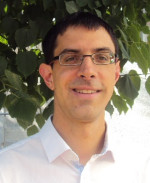
After a thesis on the diffusion of innovations in urban sanitary engineering at the beginning of the twentieth century (water purification, waste treatment), I turned to the history of air pollution. I work at LARHRA (Laboratoire de recherche historique Rhône-Alpes), Université Lyon2.
-
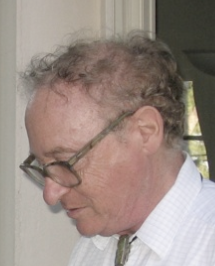
After his studies at Ecole Normale Supérieure in Paris, Uriel Frisch has done a PhD under the supervision by Evry Schatzman, mostly on wave propagation in turbulent media and stochastic equations. He did most of his career as CNRS researcher at Observatoire de la Côte d’Azur with several stays in USA. He worked on intermittency and complex-domain singularities, on singularities of the 3D Euler equations and their relation to energy dissipation in the limit of zero viscosity. He also worked on plasma physics and MHD and on large-scale cosmological structures in the Universe. In the last ten years he spent about 30 % of his time on history of science (documenting Leonardo da Vinci, Euler, Cauchy, Hankel, Clebsch). He was elected in 2008 to the French Academy of Science. He obtained a few major prizes: 1967 Prix Peccot (College de France); in 2003 the Lewis Fry Richardson medal of the European Geophysical Society ; in 2010 the International Prize “Modeste Panetti e Carlo Ferrari” (Torino) ; in 2015 Officier Ordre National Mérite.
-
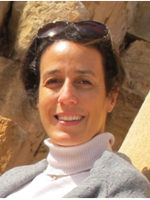
Paola FURLA is Professor of Animal Biology at the Université Nice Sophia Antipolis (member of the Université Côté d’Azur). After studying at the University of Milan (Italy), she obtained a PhD in Science at the Université de Aix Marseille II on the mechanisms of inorganic carbon absorption within a Cnidarian-Dinoflagellate symbiosis. She took up her first teaching and research positions at the Université Nice Sophia Antipolis in 2001. Since 2008, she has been leading a research team belonging to UMR 7138 Evolution Paris Seine interested in the adaptation and acclimatisation processes of Cnidarians to life in symbiosis. Through multiple approaches ranging from biochemistry and physiology to evolutionary biology, she deciphers the mechanisms responsible for both maintaining and breaking the symbiotic association. She is co-author of about forty publications in international peer-reviewed journals and has supervised eight PhD theses. At her University, she also co-directs a master's degree in marine biology and is involved in many other collective teaching responsibilities. Since 2010, she has been a member of the Conseil National des Universités in Section 68.
-
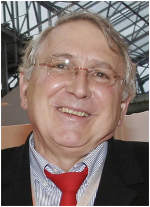
Jean-Pierre Garrec (1944-2022) was Director of Research at INRA until 2008. He was first interested in atmospheric pollution by fluorine and its interactions with vegetation, research carried out within the laboratoire Biologie Végétale of CEA-Grenoble. Then, as Research Fellow at the CNRS, he headed the Research Team "Microanalyse X en Biologie Végétale - Étude des mouvements d'ions liés aux mouvements stomatiques". As part of this team, his physiological research aimed to attempt to define the exact relationships between ionic accumulation and different stomatal movements, as well as causal relationships. In 1985, he joined the Centre de Recherches INRA de Nancy to head the Laboratoire de pollution atmosphérique of the Unité Écologie et Écophysiologie Forestières (Département Forêts et Milieu Naturels). Within INRA, his fundamental physiological research concerns the study of the "tree-atmosphere" interface (which includes the cuticle, cuticular waxes, stomata at leaf level and bark at trunk level), and more precisely the study of the mechanisms of perturbations of this interface induced by different environmental stresses: ozone, dry and wet acid deposition, various atmospheric pollutants, CO2, ultraviolet etc.... At the same time, as part of his applied research, he has developed original plant methods for monitoring the environment in order to assess the risks associated with exposure to air pollution.
-
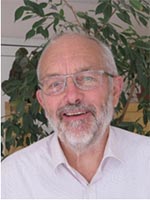
Jean Claude Germon is Honorary Research Director of the INRA. Agronomist engineer (Montpellier), graduate in Pedology (Université de Montpellie) and in General Microbiology and Microbiology of Soils (Institut Pasteur), he has developed studies on the purifying functioning of soils, on the nitrogen cycle in cultivated soils and the bioavailability of nitrogen from organic waste, on gas losses by denitrification and nitrogen protoxide (N2O) emissions by cultivated soils. The work of his team made it possible to develop a method for evaluating these losses on the scale of cultivated plots and led to extrapolations over time and at different territorial scales, highlighting the decisive role of agricultural practices on these losses and gaseous emissions.He was Director of the laboratoire de Microbiologie des sols de l’INRA (1987-1997), was a member of the Conseil scientifique du département SDU of the CNRS and the Conseil Scientifique de la division « Surfaces et interfaces Continentales » division of the INSU, project manager at the MSTP of the Ministère de la Recherch and then at the Agence d’Évaluation de la recherche (AERES). An expert in IPCC working groups involved in the assessment of N2O and CH4 emissions from soils, he is one of the scientists associated by the IPCC with the 2007 Nobel Peace Prize. He is a member of the Académie d'Agriculture de France.
-
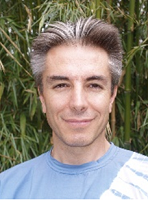
1994: Diploma of Engineering from the Ecole Nationale de la Météorologie. 1995: Assigned to the Recherche et Développement department of the North-East Inter-Regional Centre in Illkirch-Graffenstaden. 1997: Assigned to the Prévision Générale Department in Toulouse. He is now Chief Forecaster at Météo France.
-
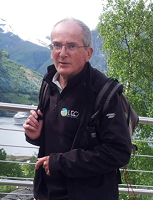
Since 2012, Jacky Girel has been a scientific collaborator at the Laboratoire d'Ecologie Alpine (LECA, Université Grenoble-Alpes); he is an expert in the management and restoration of vegetation in anthropized hydrosystems and participates in the training of ecological engineers (M2 "Biology-Ecology-Evolution ; Environmental Management course" at the Université Grenoble-Alpes). As a research engineer in Plant Ecology at the CNRS, he has participated in national and international interdisciplinary research programs. Its activity aimed to highlight the mechanisms at the origin of plant biodiversity in mountain river hydrosystems.
-
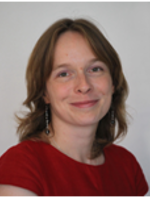
Julie Gobert holds a doctorate in land use planning/urban planning and geography. It is linked to the Laboratoire eau, environnement et systèmes urbains (LEESU). Based on sociology and political science methods (Sciences-Po Lille, 2000-2004), his research focuses on the issues of anchoring and territorial integration of infrastructures (energy production, transport, biomass transformation, etc.) in relation to the issues of social acceptability and environmental inequality. It has particularly focused on the theme of socio-environmental compensation. It currently carries out studies (regional, ADEME, European or industrial projects) aimed at helping local authorities or industrialists to better link the objectives of economic development and the creation (or maintenance) of local value with environmental requirements. Circular economy, industrial ecology and energy transition have therefore entered the spectrum of his work.
-
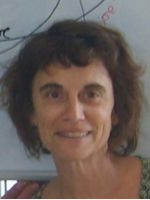
Déborah GOFFNER is a research director at the CNRS. Specialized in plant biology, she has led research on the biochemical and molecular mechanisms regulating cell wall biosynthesis in plants at the UMR CNRS/Université de Toulouse III "Laboratoire de Recherche en Sciences Végétale" for over 20 years. In 2011, she completed a thematic and geographical mobility, and is now in charge of the « Plantes et ressources végétales sahéliennes pour le développement et la Santé » (PLANTS) team within the l’Unité Mixte Internationale CNRS 3189 « Environnement, Santé et Sociétés ». She is geographically based at the Cheikh Anta Diop University in Dakar, Senegal, and at Stockholm University in Sweden within the Stockholm Resilience Centre, where she has been a visiting researcher since 2012. Since 2015, she has been coordinating the ANR-FUTURE SAHEL research program: "Multi-scale approaches to best practices in resource management of Sahelian landscapes in the context of the Great Green Wall for the Sahara and Sahel", which brings together French, Senegalese and Swedish academics and Senegalese natural resource managers responsible for the implementation of the Green Wall in Senegal.
-
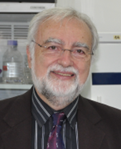
Jean-Paul Gonzalez is a member of the faculty, School of Medicine, and Associate Professor at Georgetown University, Washington D.C., USA. He teaches global health policy and biosecurity in the master's and doctoral programmes. Dr Gonzalez obtained his MD from the University of Bordeaux Medical School and his PhD from the University of Clermont-Auvergne, France. After completing his medical training in a hospital in Amazonian French Guyana, he volunteered for active national service at the Pasteur Institute in Tunis, before joining the French Institute for Development Research (IRD) to pursue a career in overseas France in the fields of medical research, training and expertise. He then joined the IRD and the international network of the Institut Pasteur, where he gained exceptional practical experience in host countries with limited resources in Africa, the Americas and Asia. He leads multidisciplinary and multicultural teams in Institut Pasteur's international network and in national institutes and university laboratories in the host countries. His work focuses on understanding and combating the emergence of infectious diseases, responding to epidemics and implementing the One Health approach.
-
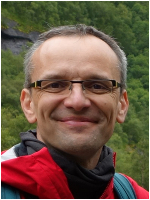
Hugues Goosse is research director at the Fonds de la Recherche Scientifique (F.R.S - FNRS) and professor at the Université catholique de Louvain (Belgium) where he teaches climatology and related disciplines. His research focuses on the development of climate models, the comparison between model results and different types of observations, and the application of these models to study past and future climate change. It focuses on both natural variations and human-induced climate change. More specifically, this recent work focuses on the interactions between sea ice and the ocean in the Southern Ocean, climate change over the past millennia and data assimilation methods in paleoclimatology. He has published a book on climate dynamics and modelling at Cambridge University Press (http://www.climate.be/climatebook/)
-
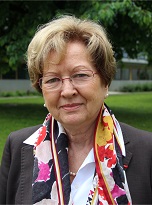
Since the 1980s, his research has focused on "opportunistic deep fungal infections" (pathophysiology, immunology, biological diagnosis), linked to deep immunosuppression and due to environmental micromyces or endogenous yeasts. This work was carried out until 2002 in the framework of recognized laboratories: the UPRES-A CNRS "Relations Hôte-Agents Pathogènes" then the EA-UJF "Interactions Cellulaires Parasites-Hôte". The experience acquired in 30 years is reflected in the management of a European contract (Molecularepidemiology of invasive aspergillosis: 1997-2000), some 100 publications and book chapters and the writing of a book « Mycoses humaines : démarche diagnostique », Elsevier-France, 1995, 400p). Her career path has been selected from the twelve "Women of Science" portraits of the Université Joseph Fourier Grenoble (2000). At the end of her career, she mainly devoted herself to expertise activities at the Institut de Veille Sanitaire (evaluation of National Reference Centres) and academic activities, including the Direction of the Faculté de Pharmacie de Grenoble (2007-2011). Renée GRILLOT has been a full member of the Académie Nationale de Pharmacie since 2001.
-
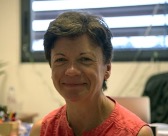
Claude Grison, Research Director at CNRS, is director of the Laboratory of Bio-inspired Chemistry and Ecological Innovations (ChimEco, CNRS-Université de Montpellier). It develops interdisciplinary research activities focused on the search for ecological solutions in the face of environmental changes: soil degradation, pollution of the aquatic environment, multiplication of invasive plant (aquatic plants) and animal (mosquitoes) species, scarcity of natural resources. The solutions studied are based on the defense and adaptation mechanisms of plants to their environment in a context of abiotic (pollution) or biotic (insects) stress. The overall approach will be based on a molecular approach that relates to the chemistry of living organisms and ecology. She is at the origin of the concept of Ecocatalysis, which has given rise to a new line of research at the interface of bio-inspired Chemistry and scientific Ecology; it corresponds to a global approach to sustainable development leading today to the development of a new green sector based on the ecological rehabilitation of degraded ecosystems and an unprecedented chemical and economic recovery of the phytotechnologies developed. She is the author of 191 publications and books, and 43 patents. Her work has been rewarded with 10 scientific prizes, including the A. Joannides Prize from the Académie des Sciences 2016, the Homme-Nature Prize from the Sommer Foundation 2016 and the CNRS Innovation Medal 2014. She is a national corresponding member of the Académie Nationale de Pharmacie and member of the Académie européenne des Sciences.
-
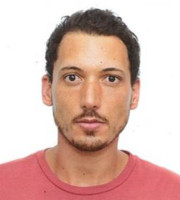
Alexandre Grondin studied during his thesis the role of proteins (aquaporins) involved in water flows leading to stomatal closure in the model plant Arabidopsis thaliana. In post-doctorate at the International Rice Research Institute (IRRI) in the Philippines, then at the University of Nebraska-Lincoln in the United States, he studied the genetic and physiological mechanisms involved in the response of rice to stress. water with a particular focus on the roots. In 2017, he joined the IRD where his research aims to identify, in tropical cereals (rice, millet, sorghum), root traits useful for the development of a more sustainable and resilient agriculture in the face of future climates. This research is notably carried out in partnership with researchers from West Africa, in particular from Senegal, where he was expatriated from 2018 to 2022.
-

Pierre Guériau is a paleontologist, post-doctoral fellow at the IPANEMA laboratory and at the SOLEIL synchrotron. He is mainly interested in the conquest of continents by animals and the establishment of the first terrestrial ecosystems during the Devonian. In this context, he discovered in an exceptionally preserved deposit in Belgium the oldest continental representatives of several groups of crustaceans, including fossils extraordinarily similar to current triops and artemias. His research is now focused on the physico-chemical characterization of these fossils, using advanced imaging techniques, in order to understand the mechanisms underlying their exceptional fossilization.
-
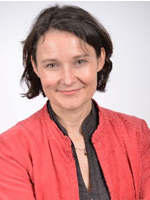
Sylvie Guidotti is in charge of the Environnement et Santé Division, Études & Conseil Department (Meteorological Services Department) at Météo-France. This division aims on the one hand to maintain and develop all operational tools to meet the needs of environmental emergencies monitoring (air pollution) within the framework of the establishment's regulatory obligations and its international responsibilities, and on the other hand, ensures, for its operational component, the monitoring and evolutions of the MOCAGE model used for air quality forecasting, as well as the monitoring of requests related to biometerological subjects. Since 2015, Sylvie Guidotti has been managing the regional component of the production component as part of the Copernicus Atmosphère (CAMS project), services delegated by the European Union to ECMWF (medium-term weather forecasting centre).
-
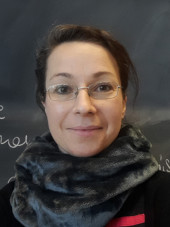
Soazig Guyomarc'h is a teacher-researcher in plant biology. Captivated by the ability of plants to grow and develop continuously in their environment, she trained as an agricultural engineer, then specialized in research, with a thesis on the development mechanisms of plants at the University of Orsay. After two post-doctoral contracts on the formation of leaves and flowers, in Bern in Switzerland, then in Lyon in France, she joined the University of Montpellier. She teaches Life Sciences students the knowledge acquired and study methods in plant biology and biotechnology. At the same time, with her colleagues at the Institut de Recherche pour le Développement, she is conducting research aimed at better understanding the mechanisms by which plants can repeatedly produce new roots, in order to draw resources from the soil by adapting to the constraints of their environment.
-
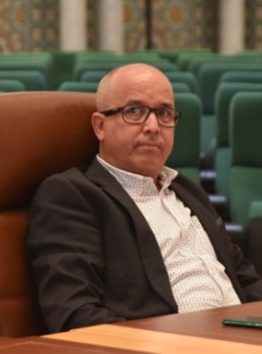
Mohamed Hanchane, who holds a doctorate from the University of Aix-Marseille I, is Professor of Climatology at the Sidi Mohamed Ben Abdellah University in Fez. He is a member of the International Association of Climatology (IAC) and a founding member of the Moroccan Association of Climatology (AMC). He has supervised around ten theses in climatology. His research focuses on climate-related risks in Morocco in relation to atmospheric dynamics, and on issues related to applied climatology (urban climate and agroclimatology). He has published around a hundred articles, the most recent of which deal with the quality of rainfall data in Morocco and the possibilities of correcting rainfall series from reanalyses. He is currently leading a research project entitled "Climate change, territorial development and environmental justice-Cas de la région Fès-Meknès (Maroc)", funded by the Centre National de la Recherche Scientifique et Technique (CNRST).
-
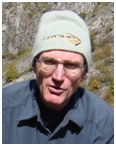
Didier Hantz is a Civil Engineer of Mines, Doctor of Engineering from the Université Grenoble 1 and holds an Habilitation to Lead Research. He completed his thesis on the dynamics and hydrology of alpine glaciers at the LGGE (Laboratoire de Glaciologie et Géophysique de l'Environnement), before joining CERCHAR (Centre d’Études et Recherches de Charbonnages de France), where he worked mainly on the stability of the slopes of mines and open-air quarries. Since 1989, he has been a lecturer at the Université Grenoble Alpes (UGA), where he teaches as part of the University's engineering school (Polytech Grenoble). He conducts his research at the laboratory ISTerre (Institut des sciences de la Terre), in the Géophysique des Risques et de l'Environnement team, where he studies the erosion processes of cliffs, which lead to rock falls, and develops new methods for assessing the hazard (and risk) posed by these landslides.
-
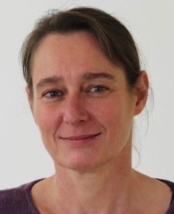
Hélène Hardin-Pouzet is professor of neurosciences at Sorbonne University, at the Paris Seine Institute of Biology (Paris Seine Neurosciences laboratory, Neuroplasticity of Reproductive Behaviors team). His teaching focuses on integrative aspects from the physiology of major functions, endocrinology, neurophysiology and neuroendocrinology. For research, after having developed a theme on the central control of osmoregulation and the associated cellular and molecular plasticity, she is currently interested in the control of the gonadotropic axis and reproductive behaviors, in mouse models, with a special interest in the influence of endocrine disruptors and diet. Its research is supported, in part, by ANSES. Through her activity in both training and research, she has developed expertise in the field of animal research. Hélène Hardin-Pouzet is a former member of the scientific council of the French Society of Neuroendocrinology. She is currently a member of the French Society of Neurosciences, the Society of Endocrinology and the French Society of Neuroendocrinology.
-
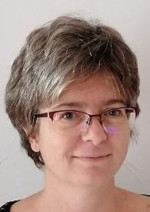
Engineer and doctor of geophysics, I joined CEACEA to participate in seismic and tsunami hazard studies, in particular to study Pacific tsunamis using digital tools. When the 2004 tsunami occurred in the Indian Ocean, I took part in setting up the future French tsunami warning system, Cenalt, which has been operational since 2012. My subjects of study also focused on the contribution of knowledge of tsunamis to better understand the physical processes and mechanisms linked to their generation and propagation, while carrying out hazard studies to better anticipate the effects on the coast.
-
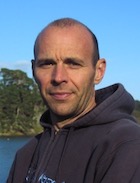
Arnaud Huvet, holder of a doctorate in Population Biology from the Université de Tours. He was recruited in 2001 at Ifremer and currently works in the LEMAR research unit based at the Brest-Iroise technopole in Plouzané. He conducts research in the physiology of marine bivalves with a focus on the mechanisms of reproduction and adaptation of animals in response to a changing marine environment under anthropogenic pressure. He is developing research on the fate and impacts of microplastics on exploited marine organisms living on our coasts. He is currently responsible for the partner Ifremer in a cross-border European project entitled Preventing Plastics Pollution.
-
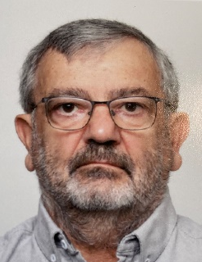
After a 3rd cycle in Geophysics at Clermont-Ferrand, Bernard Itier joined INRA (now INRAeINRAe) in Versailles in 1973. He first carried out research in micrometeorology. These have been applied to the determination of plant evapotranspiration, the characterization of the oasis effect and the study of spring frost. Director of the Bioclimatology laboratory of Grignon (1985-1988), he was interested in the coupling of physical and physiological criteria for the conduct of irrigation. He then headed the Bioclimatology department (1992-1997) and was then the first head of the "Environment and Agronomy" department at INRAe (1998-2001). At the STUE department of the Ministry of Research (2002-2003) he contributed to the establishment of the Observatoires de Recherche en Environnement (O.R.E.). President of the INRAe Center in Montpellier (2003-2007), he led the collective expertise “Drought and agriculture” (2005-2006). Before retiring in 2012, he invested in the use of agri-environmental models to study the impact of climate change on the water comfort of plants and the availability of water resources ("CIMATOR" project, 2007-2010).
-
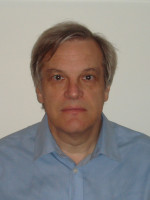
Claude Jaupart studies the mechanisms of heat transport in the Earth and the mechanics of geological fluids. He was born on May 22, 1953 and obtained a PhD degree from the Massachusetts Institute of Technology and a Doctor of Physical Sciences degree from the University of Paris Diderot (which is now the University of Paris). He directed the Institut de Physique du Globe de Paris for ten years. He is a member of the Academy of Sciences and a “Fellow” of the American Geophysical Union and the European Geosciences Union. His research focuses on the thermal structure and evolution of continents, natural convection phenomena in the Earth's mantle and the mechanics of magmatic systems and volcanic eruptions. He is author and co-author of more than 160 scientific articles, numerous chapters of collective works and, with Jean-Claude Mareschal, of a geophysical treatise entitled “Heat Generation and Transport in the Earth” and published by the Presses Cambridge academics in 2011. He supervised 20 doctoral theses.
-
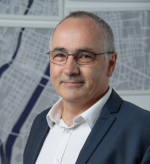
-
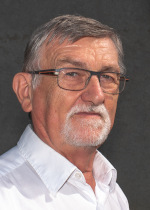
Jacques Joyard is Honorary Research Director at the CNRS. He carried out almost all of his research at the CNRS, in the Laboratoire de Physiologie Cellulaire et Végétale (Joint CNRS, CEA, INRA and Université Grenoble Alpes unit) which he headed from 1991 to 2002. His research has focused mainly on the limiting envelope of chloroplasts, including the determination of its structural and functional characteristics, which testify to the endosymbiotic origin of chloroplasts. Coupling biochemical and molecular approaches with functional approaches, this work has demonstrated the unique role of envelope membranes in the biogenesis and physiology of chloroplast and plant cell. This research on the envelope of chloroplasts has been the subject of more than a hundred scientific articles in peer-reviewed journals. Scientific advisor at the CEA, he participated in the creation of Rhône-Alpes Genopole (of which he was Deputy Director, then Director), Labex GRAL, etc.
-
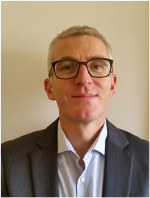
Professor of public law at Chambéry and current director of the CDPPOC (EA4143) and Co-director of the Master in Mountain Law, he has considerable experience in collaborative research projects both as part of the delegation to the CNRS that he held within GRIDAUH, (GIP 2010-2014: ex. Evaluation of the first SCOT - 2009, Writing of the PLU - 2012, Urbanization of the mountain - 2013), either in its Faculty (various Interreg projects). His research focuses mainly on urban planning law and public finance. They are part of a critical approach to the legal standards of society's commitment to sustainable development: JF Joye, Construire et aménager en montagne après la loi du 28 décembre 2016: les communes face à leurs responsabilités, la Revue Juridique de l'Environnement, mai 2017, JF Joye, Les outils juridiques de l'aménagement touristique de la montagne, Les loisirs de montagne sous Vichy : droit et politique, PUG, 2017, JF Joye, Le chalet d'alpage, nouvel enjeu d'urbanisation dans les pâturages, Constr.-urb. mars 2015, pp. 8-14, JF Joye, G. Calley, JF Dreuille (dir.), L'accident en montagne, 2015, LGDJ, 453 p.
-
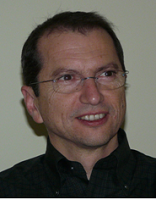
Saadi Khochbin, Director of Exceptional Class Research at the CNRS, heads a research team (Laboratoire Epigénétique et signalisation cellulaire) and the Signalisation et Chromatine at the Institut Albert Bonniot (Centre de recherche Université Grenoble Alpes, Inserm U1209, CNRS UMR 5309). His work, including the discovery and functional characterization of new actors in cell signalling through acetylation and factors controlling the final programming of male germ line cells, has highlighted fundamental cellular regulatory networks and led to the emergence of new concepts linking very fundamental concepts to translational research with medical and industrial applications in the field of cancer.
-
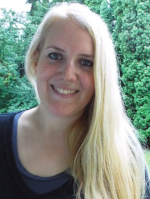
Katrin Kleemann is a doctoral candidate at the Rachel Carson Center at LMU Munich in Germany, she studies environmental history and geology. Her doctoral project investigates the Icelandic Laki fissure eruption of 1783 and its impacts on the northern hemisphere. She holds a master’s degree in early modern history and a bachelor’s degree in history and cultural anthropology. Katrin receives a doctoral fellowship from the Andrea von Braun Stiftung. She also is the social media editor for the Climate History Network and HistoricalClimatology.com.
-
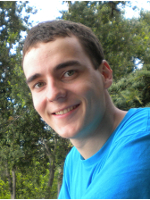
During his PhD and postdoctoral research at UCLouvain, François Klein studied the mechanisms responsible for past climate change, adopting the approach "the past is the key to the present and the future". One of these main research projects concerned the analysis of the variability of East African rainfall over the past millennium. To do this, he used various of the most sophisticated climate models available, which he combined with other sources of information on past climates, such as reconstructions from various natural archives, through a data assimilation method. Recently, François Klein has decided to focus more on the technical aspects of climate models than on scientific research, and is now working on their development, optimization, and installation on supercomputers, still since UCLouvain.
-
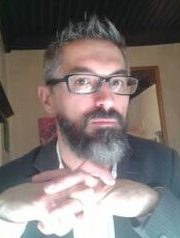
Fabien Knittel is a lecturer in contemporary history at the University of Franche-Comté and a researcher at the Centre Lucien Febvre. He is also deputy general secretary of the Association d'Histoire des Sociétés Rurales. His current research focuses on the history of rural farming techniques in nineteenth-century France and Western Europe. With Pascal Raggi and Nadège Mariotti, he co-edited Le travail en Europe occidentale des années 1830 aux années 1930. Mains-d'œuvre artisanales et industrielles, pratiques et questions sociales (Ellipses, 2020). He is also the author of Agronomie et techniques laitières. Le cas des fruitières de l'Arc jurassien (1790-1914), Paris, Classiques Garnier, 2021, 392 p. He recently published the article "Milk and hygiene in Eastern France: the 'goutte de lait' at Besançon and the 'œuvre du bon lait' at Bar-le-Duc (Late Nineteenth to early Twentieth Centuries)", French History, vol. 36-3, September 2022, pp. 334-347. Finally, he wrote the book La Fabrique du lait. Europe occidentale (Moyen Âge-XXe siècle), Paris, CNRS éditions, 2023, 216 p.
-
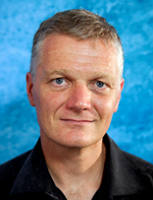
Gerhard Krinner is research director at the Institut des Géosciences de l'Environnement (IGE) of the CNRS. For more than 20 years, Gerhard Krinner has been working on the climate of the polar regions. He is particularly interested in surface processes at high northern latitudes (involving snow and ground freezing) and the mass balance of ice caps. These two aspects of polar climate are of global importance: the mass balance of continental ice caps (particularly Greenland and Antarctica) strongly determines the evolution of global sea level, while the possible future thawing of large portions of frozen ground in high latitudes (in Siberia and North America) may amplify future climate change through increased CO2 and methane emissions. Gerhard Krinner uses digital climate models to study past, present and future polar climate. He participated in the work of the IPCC 5th report as lead author for the chapter "Long-term climate change" and is currently chair of the Climate and Cryosphere (CliC) project, one of the four main pillars of the World Climate Research Programme led mainly by the World Meteorological Organization.
-
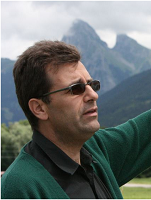
Geologist and doctor of quantitative hydrogeology, Patrick Lachassagne has focused his expertise and research activity on complex aquifers: groundwater in crystalline, volcanic, karst and glacial basement regions, natural, thermal and geothermal mineral water aquifers. It has led to a major evolution in scientific concepts concerning the structure and hydrogeological functioning of fractured basement aquifers (plutonic and metamorphic rocks): it has demonstrated that their permeability is due to supergenic alteration processes and has resulted in many operational applications in hydrogeology. For more than 20 years at BRGM, he has participated in the development of specific methodologies for the recognition, management, modelling and protection of these complex aquifers, during operational and research projects in metropolitan France, in DROM-COM and abroad. For nearly 9 years, he has been pursuing this activity, combining research and operational work for Danone Eaux on the natural mineral water deposits of Evian, Volvic, Badoit and La Salvetat and, more occasionally, internationally. Patrick Lachassagne provides regular university teaching and professional training. Since 2014, he has created and managed the "Water Institute by Evian" (www.waterinstitutebyevian.org). He is a certified hydrogeologist and vice-president of the French Committee of Hydrogeology of the Association Internationale des Hydrogéologues.
-

Franck Lagarde, holder of a doctorate in Marine Biology and Ecology from Sorbonne-Université. He was recruited in 2001 at Ifremer and currently works in the joint MARBEC based at the Ifremer station in Sète. Franck Lagarde supports Mediterranean coastal society in the context of global change through research, observation, experimentation and innovation. He studies the functioning of fluctuating or disturbed Mediterranean coastal and lagoon ecosystems. In recent years, the major topics addressed by Franck Lagarde have focused on the development of knowledge related to the reproduction and recruitment of native cupped oysters in Mediterranean lagoons, the emergence of pathogens and the ecological responses of lagoon ecosystems exploited by shellfish farming in the face of extreme hydroclimatic events (phenomenon of green water in Picochlorum in 2019).
-
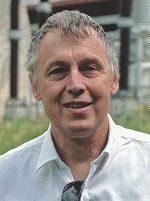
Christian Lallement, hydraulic engineer, worked at the Rhone Mediterranean Corsica Water Agency, then in several departments of EDF (Electricité de France), Direction de la Production et de l'Ingénierie Hydraulique. Its activity has led it to operate flow measurement networks (in the Massif Central, Corsica, the Rhone and Rhine basins), to contribute to the improvement of measurement systems (flow and its remote transmission), to the development of data criticism tools, to assist decision-making in the drawing of tare curves, to enhance the value of old hydrometric data, to take into account historical information (XV-XIX century) for determining past floods. From 1990 to 2000, Christian Lallement was president of the commission française de normalisation de la mesure des débits en canaux découverts. He has been retired since July 1, 2017, after having held the position of Directeur Eau Environnement at the Unité de Production Hydraulique Alpes.
-
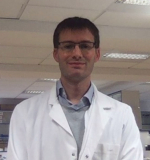
Raphaël Lami is developing research in Microbial Ecology at Laboratoire de Biodiversité et Biotechnologies Microbiennes, and is particularly interested in mechanisms of coordination between microbial cells by quorum sensing. His research aims to better understand the diversity of chemical messengers involved in these phenomena and their biological roles. The long-term challenge is to identify possibilities to inhibit the effects of these chemical signals, in particular to combat the formation of biofilms or the development of pathogens in the aquatic environment.
-
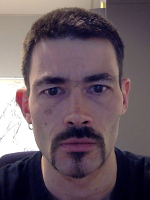
Coming from the École Normale Supérieure de Paris where I followed the training in Earth sciences as well as courses in evolutionary biology, aggregated in Life and Earth Sciences, I sought to maintain a wide range of interests, with a thesis combining numerical modelling, paleontology and animal physiology, then diversified courses, ranging from geophysics to animal and human evolution, and finally adding in 2016 a Master of Science History, while cultivating a certain interest for archaeology. I am an associate professor of Life and Earth Sciences at the École Normale Supérieure de Lyon.
-
LAPLAZE Laurent Research Director, Joint Research Unit DIADE, University of Montpellier, Montpellier
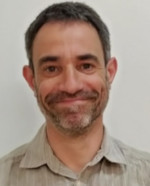
After a thesis on nitrogen-fixing symbioses carried out at IRD Montpellier, Laurent Laplaze carried out a postdoc on the genetic mechanisms of root development in the model plant Arabidopsis thaliana at the University of Cambridge (GB). He then joined the IRD in 2001 to work on the establishment of symbioses (actinorhizal and endomycorrhizal symbioses) and their impact on root development. His current studies focus on tropical cereals (millet, rice, sorghum) and aim to characterize and mobilize root traits to develop new varieties and practices to sustainably improve the production and resilience of agricultural systems. His career is characterized by a strong partnership with West Africa and in particular Senegal, a country in which he was expatriated for seven years and where he co-directed between 2012 and 2021 the International Joint the Laboratoire mixte international Adaptation des Plantes et microorganismes associés aux Stress Environnementaux (LAPSE).
-
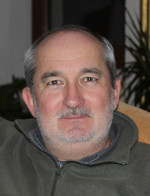
Gérald Larcher is currently professor of biochemistry and animal biology at the Faculty of Pharmacy in Angers. Following his studies in pharmacy, he joined the study group for host-pathogen interactions (Université d’Angers, Institute of Health Biology CHU) for his research activities which mainly focused on virulence factors (proteolytic enzymes and oxidative stress, siderophores) of fungal pathogens involved in cystic fibrosis. Eager to sensitize health students to a new evolutionary and ecological approach to health problems, he recently opened a teaching unit called "Ecology of health". At the same time, his interest in nature led him to create in 2000 with naturalist friends from the region the bats group of the Loire Valley. Confronted in 2003 with a case of a rabid bat that involved a human being in Maine-et-Loire, in 2007 he took over the coordination of the epidemiological surveillance network for rabies in bats created by ANSES-Nancy in collaboration with the French society for the study and protection of mammals (SFEPM). Currently, he is a member of the board of directors of the SFEPM, more specifically in charge of health issues concerning bats.
-
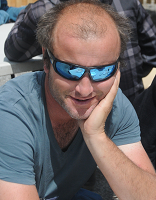
Sébastien Lavergne is a CNRS research fellow at Laboratoire d'Écologie Alpine (LECA) since 2008. His research activity focuses on understanding the genetic basis of species adaptation and studying diversification mechanisms.
-
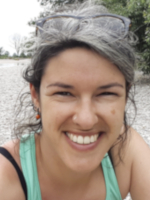
I am currently a post-doctoral researcher at the Technical University of Munich (TUM). My research focuses on community ecology, including tropical herbaceous communities and savannas, restoration ecology and functional ecology. I did my co-supervision thesis between the University of Avignon and the Federal University of Minas Gerais (Belo Horizonte Brazil) and I then worked at Gembloux AgroBioTech at the University of Liège (Belgium), in collaboration with a mining company in the Democratic Republic of Congo. During this period, I worked on the analysis of the impacts of anthropogenic degradations and land use changes on the vegetation structure. This work aimed to put in place tools for the conservation and restoration of tropical herbaceous ecosystems in Brazil and the Democratic Republic of Congo. After a new stay in Brazil, at the Estadual Paulista University (UNESP) in Rio Claro, I am currently in Germany to continue my research. In recent years, my research aims to understand the impact of disturbances such as fire and changes in land use, on the allocation of biomass and the functional root traits of savannah plant communities. It's also about understanding the impact of these changes on ecosystem processes and the consequences on carbon stocks in savannas.
-
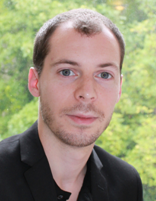
Thomas Le Tallec has prepared his doctoral thesis in ecophysiology, entitled "Impacts of light pollution on the behaviours, biological rhythms and physiological functions of a non-human primate, Microcebusmurinus" within the Mixed Research Unit 7179 UMR 7179 « Mécanismes Adaptatifs et Évolution » (CNRS/MNHN) from 2011 to 2014 under the co-direction of Marc Théry and Martine Perret. His work shows that exposure to light pollution in urban/peri-urban environments could modify the locomotor and feeding behaviours of nocturnal mammals, alter their perception of the photoperiod and, consequently, disrupt their reproduction and seasonal thermoregulation. He is an Associate Professor.
-
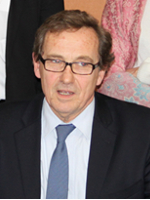
Bernard LEGUBE is Professor Emeritus at the Université de Poitiers, attached for research to the Laboratoire de chimie et microbiologie de l'eau (UMR CNRS 7285). A trained physico-chemist, specialist in water quality and treatment, he is the author of recent books in this field. Its own scientific production is about 300 miscellaneous publications (nearly 140 publications of rank A, more than 4000 citations, h-index 38, in 2017). Bernard Legube was Director of the Unité de chimie et microbiologie de l’eau (UMR CNRS 6008), Director of the Ecole Nationale Supérieure d'ingénieurs de Poitiers, where he also taught, and then President of the PRES (now COMUE) Limousin-Poitou-Charentes. He is currently president of the consortium of French institutions in support of the « Vietnam France University » (USTH) (USTH), vice-president of IANESCO Chimie (analysis and testing laboratory) and has chaired the scientific council of the Agence de l’Eau Adour-Garonne since 2015. Bernard Legube is also an expert consultant for local authorities, design offices and distribution companies in the field of drinking water production (quality of resources, production chains, distribution, impact of climate change).
-
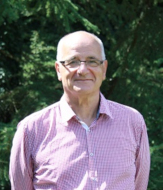
Researcher in Ecophysiology of meadows and fodder plants at the INRA Center in Lusignan (86600) from 1974 to 2010. Conducted research on the nitrogen nutrition of fodder stands and its impact on the production and quality of fodder and more generally on the nitrogen nutrition diagnosis of crops. He has also conducted research on grassland ecology and on grass-animal interactions in pasture and the optimization of grassland management both from the point of view of animal production and environmental impacts. He was involved as deputy head of the Agronomy Department then Environment & Agronomy in the research strategy of INRA for ten years. He has notably collaborated scientifically with Australia, New Zealand and Brazil. He is the author of 120 international scientific articles, 32 book chapters and more than 200 popular articles. He retired in 2010, but remains active on the editorial boards of numerous international scientific journals. He has been a member of the French Academy of Agriculture since 2011.
-

I am a young researcher in the Department of Molecular Chemistry ((DCM) at UGA, I am working with Yannick Vallée from DCM, and Yvain Nicolet from the Institut de Biologie Structurale (IBS) (IBS) on a doctoral project around the origin of life. After obtaining my baccalaureate in 2012, I joined the FST of Fez, to obtain the DEUST diploma, specializing in biology, chemistry and geology. In 2015 I obtained my Bachelor's degree in chemistry-biology from UGA, then in 2017 I graduated from a Master's degree in chemistry in organic synthesis for the pharmaceutical and agrochemical industries from UGA.
-
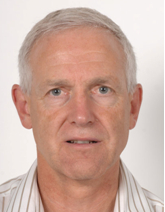
Engineer in Meteorology, then in Bridges, Waters and Forests, I worked from 1980 to 2011 in the Direction des Systèmes d’Observation of Météo-France, first as a development engineer (ground observation sensors, acquisition stations, radiosonde), then as head of a Quality Division; Methods and References (observation methods, instrument testing, metrology laboratory), then as head of the surface observation department (ground networks, specifications and maintenance, automatic observation on aerodromes). I have had many activities within OMM (CIMO, Commission des Instruments et Méthodes d’Observation) and OACI (expert groups on automatic observation). Retired since April 1, 2017, with some consulting activities in instrumentation and observation methods (Metobs Consulting).
-
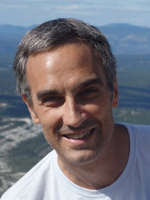
Christophe Lett is Research Director at Institut de recherche pour le développement (IRD). He is a member of the Unité Mixte Internationale UMMISCO (Unité de Modélisation Mathématique et Informatique des Systèmes Complexes) and associated with the Joint Research Unit MARBEC (MARine Biodiversity, Exploitation and Conservation). He is working on modelling ecosystem dynamics using mathematical (dynamic systems) and computer (individual-centred models) approaches. He is a specialist in modelling the dispersion of marine organisms and has contributed to the development of the Ichthyop open source software (http://www.ichthyop.org) which allows it to be studied by simulation.
-
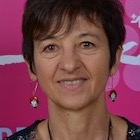
Corinne Leyval is Research Director at the CNRS within the Interdisciplinary Laboratory of Continental Environments (LIEC UMR 7360 CNRS UL) and also Director of the OSU of OTELo (Earth and Environment Observatory of Lorraine - UMS 3662) and of the Scientific Pole of the University of Lorraine since 2014. Corinne's research work focuses on soil-plant-microorganism interactions and the ecodynamics of pollutants in soils, in particular the bioavailability of trace elements and the biodegradation of exogenous organic materials. Corinne is also working on the role of rhizospheric microorganisms (mycorrhizal fungi, bacteria) and the interactions between microorganisms and the dynamics of these populations. His work leads to applications in two areas: (1) the use of rhizospheric microorganisms as a diagnostic and prognostic tool for the toxicity of pollutants in soils, and (2) phytoremediation and restoration of polluted soils
-

Li Tingju, Professor, Dalian University of Technology, China. Graduated from Dalian Institute of Technology in 1982, received Master's degree from Dalian University of Technology in 1987, and PhD from Nagoya University(Japan) in 1995. Selected for the Trans-Century Training Programme Foundation for the Talents by the State Education Commission and State Council Expert for Special Allowance. Honored as an Outstanding CPC Member of Liaoning Province in 2003, a Role for Three Types Education Model in Dalian in 2005, a Liaoning Provincial Teaching Master in 2007, a recipient of the Baosteel Excellent Teacher Award in 2010, and an Advanced Worker of Dalian in 2019. Serves as the Deputy Chair of the Electromagnetic Metallurgy and Materials Science with High Magnetic Field Subcommittee of the Chinese Society for Metals and an Executive Member of the China Foundry Association. Formerly a member of the Academic Degrees Committee of the State Council Discipline Appraisal Group (Fifth Session) and a member of the Ministry of Education's Teaching Guidance Committee. Prof. Li has long been worked in high-performance metallic materials, including casting, copper alloys, and metal matrix composites. He was formerly the Director of a Key Laboratory for Higher Education Institutions in Liaoning Province. Recipient of awards including Japan's Minister of State for Science and Technology and Commissioner of Science and Technology Agency's "Outstanding Invention" Award, the First Prize for Technological Invention of the Ministry of Education Award, the Second Prize of the National Technology Invention Award, the China Excellent Patent Award, and the Gold Medal at the Geneva International Exhibition of Interventions, among more than ten other honors. In 2017, he was named one of the inaugural Outstanding Scientists of Liaoning Province.
-
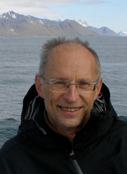
Jean Lilensten is research director at the CNRS, assigned to the Institut de Planétologie et d'Astrophysique de Grenoble (IPAG). Among other work, he found a solution of the Boltzmann transport equation for high planetary atmospheres, explained part of the Martian atmospheric escape, discovered the blue auroras, and discovered the polarization of the polar aurora.
-
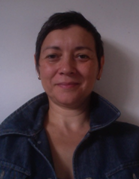
Céline Lutoff is a professor and researcher in social sciences at the Université Grenoble Alpes, Institut de Géographie Alpine since 2001. It is linked to the Laboratoire PACTE. It works on social vulnerability and adaptation to extreme natural phenomena (earthquakes and flash floods in particular). As such, it works in close collaboration with researchers in geosciences laboratories (LTHE and ISTerre for example). Between 2006 and 2015, she built and managed a team of researchers in the Laboratoire PACTE working on the environment and risks (team is associated with the Observatoire des Sciences de l'Univers de Grenoble). It works to develop interdisciplinarity between geosciences and the human and social sciences, both in terms of research and training. She is involved in an international master's degree called HydroHasards and in 2011 she directed the first international and interdisciplinary summer school "Water and Society .
-
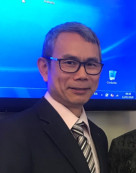
Doan Trung Luu has been a CNRS researcher since 2002 in the Biochimie & Physiologie Moléculaire des Plantes (Unité mixte Univ Montpellier, CNRS, INRAE, Institut Agro). After working on the barriers to interspecific and intraspecific reproduction (self-incompatibility) in flowering plants, then on phytoremediation, he became interested in the cell biology of aquaporins in Arabidopsis and rice, in particular in response to saline stress. Currently, he is trying to better understand the beneficial role of soil microorganisms on the tolerance of plants to salinity.
-
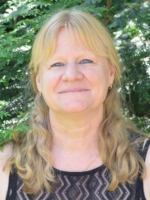
Now a professor at the Museum of Plant Ecology, Nathalie Machon did her thesis on the genetic diversity of forest trees at the Laboratoire ESE of the Université Paris-Sud Orsay between 1992 and 1995. After a postdoctoral fellowship in the same institution on the effect of the increase in atmospheric CO2 on Arabidopsis thaliana populations, she joined the Conservatoire Botanique National du Bassin Parisien in 1996 as a lecturer. She joined CESCO when it was created in 2002 and is a member of the Biodiversité urbaine Team (URBA). She is interested in the dynamics and genetics of small populations and is conducting two complementary research projects: one on populations of rare and endangered plant species and the other on urban plant populations. Since 2017, she has been the director of the École Doctorale Sciences de la Nature et de l’Homme MNHN –Sorbonne Université.
-
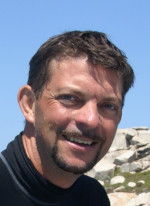
Bruno Malaizé has been a lecturer at the Université de Bordeaux since September 1998 (UMR 5805 Environnements et Paléoenvironnements Océaniques et Continentaux). By virtue of his training, he is a geologist, geochemist and paleo-climatologist. He works more particularly on the reconstruction of variations in the water balance (evaporation/precipitation), mainly in tropical to sub-tropical areas, at time scales ranging from several million years to the last centuries. These reconstructions are made thanks to the analysis of the stable isotope composition (18O and 13C) of several fossil carbonate archives, of marine origin (tests of foraminifera, corals), lake (tests of ostracods), or continental (speleothems). Over large time scales (several hundred thousand years, including Pleistocene glacial/interglacial cycles), he works mainly on the relationship between tropical monsoons and intertropical convergence zone (ITCZ) migration. For more recent periods (Holocene period and the last few millennia), it focuses on reconstructing the water balance of certain populated areas to assess the impact of these changes on the development of certain ancient civilizations, such as the Maya, Saladoïdes, pre-Incaic civilizations, or more recently on the settlement of Easter Island.
-
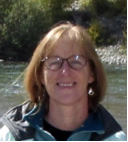
Sylvie Malardel worked until 2009 as a researcher in numerical prediction at the Centre National de Recherches Météorologiques (CNRM) and as a teacher at the École Nationale de la Météorologie in Toulouse. After about ten years of teaching, she published a book on the scientific basis of meteorology "Fondamentaux de Météorologie" (Cépaduès éditions). Since 2009, she has been pursuing her career as a researcher in the field of numerical prediction at Centre Européen de Prévision Météorologique à Moyen Terme (CEPMMT).
-
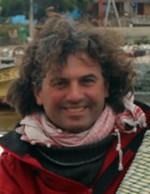
Doctor, associate researcher at the CNRS Laboratoire d'Informatique et Systèmes, DYNI team, mathematics teacher at the Lycée Victor Hugo, Marseille
-

Olivier Manneville, Honorary Senior Lecturer in Biology-Ecology, at Laboratoire d’écologie alpine (LECA) until 2007, then at the Station Alpine Joseph Fourier, Université Grenoble Alpes (SAJF), main author of the book Le monde des tourbières et des marais, 2006, 320 pages, founding member of the Groupe d'Etudes des Tourbières (president from 1993 to 1999) ; member of various scientific councils : pôle-relais national Tourbières (president from 2001 to 2009), Réserve naturelle nationale du marais de Lavours (1991 to 2016), joint scientific council of the conseil scientifique commun des Réserves naturelles nationales of étang of Grand-Lemps and of lac Luitel (president for the Luitel since 2008), etc. Supervised 30 master's courses in marine biology at the Station Océanographique of Roscoff.
-
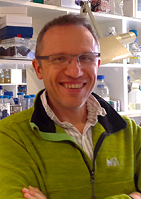
Eric Marechal is Director of Research at the CNRS, at Laboratoire de Physiologie Cellulaire et Végétale (LPCV) where he leads with Juliette Jouhet the team "Biogenèse, dynamique et homéostasie des lipides membranaires". A graduate in Natural Sciences, he completed his thesis work from 1991 to 1994 at the Université Joseph Fourier under the supervision of Jacques Joyard. He then did a post-doctoral internship at Rockefeller University in New York, United States, in the laboratory of Professor Nam-Hai Chua, before being recruited at the CNRS in 1998. His research focuses on the metabolism of membrane lipids in plant cells, a very original metabolism due to the presence of a unique organelle, the plastid, and lipids absent in animal cells, galactolipids. In addition to developing his work in higher plants such as Arabidopsisthaliana, he is interested in single-celled organisms containing relatively little studied plasts despite their ecological and economic importance, such as non-chlorophyllous plasters of Apicomplex parasites (Plasmodium, malaria agent, Toxoplasma, toxoplasmosis agent) or the highly sophisticated chloroplasts of Diatoms (Phaeodylumactact) that inhabit the oceans. His work aims both to advance fundamental knowledge and to explore the possibilities of exploiting microalgae for biotechnological applications. It has therefore set up partnerships with various biotechnology players in France, Gene-IT, Cerep, Total Energies Nouvelles and Fermentalg.
-
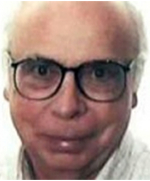
Doctorate in economics from Grenoble in 1960. Attached, in charge and research director at the CNRS. Director of the Institut Économique et Juridique de l’Énergie (1968-1982), then of the Institut d'Économie et de Politique de l'Énergie de Grenoble (1988 to 1990). Vice-president of the Université Pierre Mendes-France 1970-1980. Vice-Chairman and General Rapporteur of the Groupe Long Terme Énergie du Commissariat Général au Plan (1982-83). Technical adviser in the office of the Minister of Research and Technology (1984-86). President of the Pôle Universitaire et Scientifique Européen de Grenoble (1991-95). Today active in the association of the Encyclopédie de l’Énergie.
-
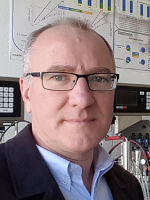
Jean Martins is Research Director at the CNRS (INSU). He led the TRANSPORE team of the Laboratoire d’étude des Transferts en Hydrologie et Environnement (LTHE) as well as the HyDRIMZ team of Institut des Géosciences de l’Environnement (IGE)de Grenoble UMR 5001 (CNRS, G-INP, IRD, UGA). He is editor of the journal Frontiers in Environmental Science, member of various reading committees and scientific committees (Ecodyn ECCO, Microbien EC2CO, Ecodyn EC2CO, Bioindicateurs of ADEME) and member of the Commission de Spécialistes Surfaces et Interfaces Continentales (CS SIC) of the INSU of the CNRS. It also carries out expert work with various local (commissions de l’eau, Régions, Zones Ateliers), national (Agence de l’eau, CNRS, INRA, ADEME) and international (CEFIPRA, CAPES-COFECUBŠ, H2020) bodies. His research area at the IGE focuses on the multidisciplinary study of the fate and impacts of natural or anthropogenic contaminants within the critical environmental zone composed of the air, water and soil compartments. He is particularly interested in the reactive transfer mechanisms of dissolved and particulate contaminants (colloids, (nano)particles, pathogenic or non-pathogenic bacteria, etc.) in soils, air and water. His work aims to better understand the functioning of this critical area and thus contribute to the development of solutions for the rehabilitation or remediation of polluted environments and to limit the human and ecological impacts of pollutants.
-
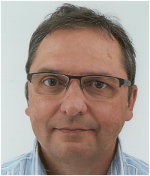
Professor of Bacteriology, Head of the Service de Bactériologie-Hygiène Hospitalière, CHU Grenoble Alpes (since September 2002). Head of the Centre National de Référence Francisella tularensis (since 2006). Doctorate in Medicine, DES in Medical Biology, Faculté de la Timone, Université Aix-Marseille II (1991). DESC "Biologie des agents infectieux", Université Aix- Marseille II (1993). Diplôme d’Études Approfondies, Faculté Bichât, Université Paris VII (1991). Doctorate from Université Paris VII, Faculté Bichât, Université Paris VII (1994). Habilitation to Lead Research, Université Aix- Marseille II (1997). Former intern at the Hôpitaux de Marseille (1986-1991). Former University Hospital Assistant at the Hôpitaux de Marseille (1991-1996). MCU-PH, Department of Prof. Didier RAOULT, Faculté de Médecine, Université Aix-Marseille II (1996-2002). Author and co-author of 135 original publications in peer-reviewed journals and 48 book chapters. Co-inventor of 5 patents. Co-editor of the journal "Frontiers in Cellular and Infection Microbiology". Member of learned societies: Société Française de Microbiologie (SFM), European Society of Clinical Microbiology and Infectious Diseases (ESCMID), American Society for Microbiology (ASM), Tularemia International Society (TULISOC).
-
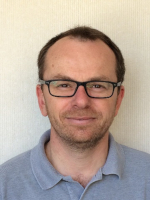
Engineer who graduated from the École Nationale Supérieure de Géologie de Nancy in 1994, I have spent almost all of my career in the fields of geotechnics and geology at the CETE and CEREMA. I have held several positions in overseas France, the Paris region, Bourgogne and then in the PACA region. During my career, I have been interested in the geology of the engineer of major state road projects as well as in the theme of natural risks related to ground movements.
-
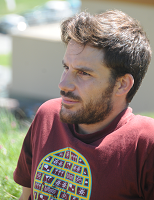
Florent Mazel has been a postdoctoral fellow at Simon Fraser University (Vancouver, Canada) since September 2016. He completed his thesis at Laboratoire d’écologie alpine (LECA, 2012-2015). His work aims to combine macro-ecological and macro-evolution approaches to understand the global distribution of biodiversity.
-

Martin Ménégoz has been involved in research topics related to climate and glaciology since 2006. CNRS researchers at the Institut des Géosciences de l’Environnement since 2019, he studies climate and cryosphere variations from observations and digital models. With a varied background, from his thesis at Météo-France obtained in 2009, through several research contracts in France and abroad, he has studied climatic variations through various issues, in particular the impact of pollution on the climate, the evolution of snow and glaciers, or climate forecasting on seasonal to decadal scales. He articulates his research activities with his profession as a high mountain guide, which allows him to combine his passion for mountaineering with the observation of socio-environmental changes in the mountains.
-
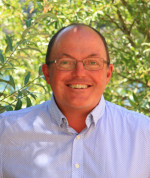
Christophe MOIROUD is an environmental expert specializing in hydrosystems, Doctor of Science "applied biology" at the University of Savoie. He joined the CNR in 1996. He has extensive experience in the design and monitoring of restoration work for watercourses and hydraulic annexes. Its specialized expertise in specific areas such as the restoration of watercourses, methods of treatment of invasive exotic plants, hydromorphological development in rivers is implemented on the Rhône and other rivers, lakes and lakes. It is recognized in international organizations, such as the World Association for Maritime and River Transport Infrastructure (PIANC).
-
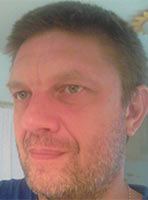
Jean-Marc Moisselin is Chief Engineer of Bridges, Waters and Forests, assigned to the Operations Directorate (Direction des Opérations pour la Prévision) of Météo-France. Deputy head of the Département Prévision Immédiate of Météo-France, he is in charge of convection products based on satellites or radars. His previous functions were the control of numerical prediction models and then R&D in climatology.
-
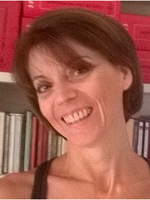
Marianne Moliner-Dubost is a lecturer at the Université Jean Moulin - Lyon 3, since September 2003. She defended her doctoral thesis on Law in the face of air pollution and climate change in December 2001 (thesis prize from the Université Lyon 3 and special prize from the Société française pour le droit de l’environnement) and her habilitation to conduct research in January 2011. Marianne Moliner-Dubost specializes in air pollution and climate law. She is the author of a book on environmental law (Dalloz Publishing, 2015) and numerous articles (51) and notes (68) on environmental law.
-
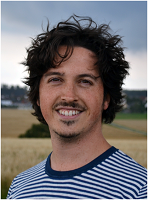
Jorge Mondéjar Fernández is a paleontologist, research assistant at the Muséum national d'Histoire naturelle and professor of Life and Earth Sciences in Paris. He is interested in the origin of the first tetrapods and the evolution of other Devonian aquatic vertebrate groups. He has worked on fossils from all over the world (Latin America, Russia, Morocco, etc.) that illustrate the great diversity of Devonian vertebrates before they leave the water. His current research focuses on describing several new species using new virtual imaging and phylogenetic reconstruction technologies to better understand their anatomy and kinship relationships.
-
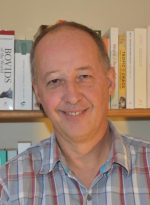
Serge Morand is a researcher in health ecology at CNRS and CIRAD at the Université de Montpellier, at the Institut des sciences de l'évolution de Montpellier, and visiting professor at the Faculty of Tropical Medicine at Mahidol University in Bangkok, Thailand. It analyzes the links between global planetary changes, biodiversity, health and societies. Ecologist and epidemiologist in the field, he is interested in the role of biodiversity in reducing the risks linked to zoonotic infectious diseases at the interfaces between environment, animals and human communities in Southeast Asia.
-
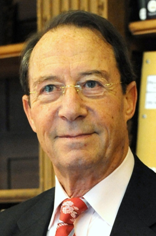
René Moreau is Professor Emeritus at Grenoble-INP, where he has spent his entire career, where he directed the ENSHMG from 1982 to 1987 and where he taught fluid mechanics at all levels. His research has focused on the MHD of liquid metals, including turbulence that tends to become two-dimensional in the presence of a fairly intense magnetic field, as well as various applications to metallurgical processes. He was the founder of the MADYLAM Scientific Interest Group, for "MAgnétoDYnamique des Liquides, Applications à la Métallurgie", which became the EPM group (for Élaboration par Procédés Magnétiques) from Laboratoire Science et Ingénierie des Matériaux et des Procédés (SIMaP). He has been a member of the Académie des sciences since 1993 and a member of the Académie des technologies since 2000. He is the author of numerous publications, a monograph "Magnetohydrodynamics" (Springer, 1990) and a popular science book "L'air et l'eau" (EDP sciences, 2013).
-
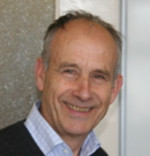
Jean-François Morot-Gaudry (1943-2024), Doctor of Science, honorary research director at INRA, Jean-Pierre Bourgin Institute, was a specialist in global measurements of photosynthesis and the mechanisms of carbon and nitrogen assimilation in cultivated plants. Various collaborations with laboratories of INRA, CEA and foreign universities (Australian and American) have led him to a synthetic knowledge of plant nutrition. He taught at the Université de Versailles, Évry and Paris VI. He has published ten scientific books in French and English for researchers and students. He was a member of the French Académie d’Agriculture of which he was president.
-
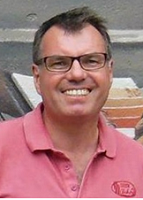
Dominique MORVAN is currently a professor at Université d’Aix-Marseille and heads the Mechanics Department of the Faculté des Sciences. From 1985 to 2000, he was a research fellow at the CNRS, successively in the Département Génie Biologique et Médical of the Université de Compiègne, at the Institut de Mécanique des Fluides de Marseille and at the Institut de Recherche sur les Phénomènes Hors Equilibre (Marseille). During his career, he has been interested in problems of modeling blood flow in cardiac cavities, diffusion transport in a bioartificial pancreas model, solid/liquid phase changes in crystalline growing metals and for power laser applications in the mechanical industry. Since 1998, he has been developing research work on the physical modelling of wildfires within the Laboratoire de Mécanique Modélisation et Procédés Propres (M2P2).
-
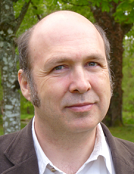
Passionate about astronomy since childhood, Fabrice Mottez is a researcher at the CNRS and works at the Laboratoire Univers et Théories (LUTH) of the Observatoire de Paris-Meudon. He studies the effects of the magnetic fields of stars and planets on their environment. His work focuses on the acceleration processes of matter in the northern lights of the Earth and Jupiter. Its approach is based on numerical simulation, analytical calculations, all conducted in interaction with observers. Since 2006, he has also been working on the environments of neutron stars, pulsars. Neutron stars are small, extremely dense and magnetized stars. A fan of popular science, he wrote as the rumour of the Mayan apocalypse spread, with the journalist Dider Jamet, a book entitled "2012 Scénarios pour une fin du monde", published by Belin. A book on the polar aurora is being prepared (Belin Publishing). He is also co-author of an academic book, "Collisionless Plasmas in Astrophysics" published by Wiley.
-
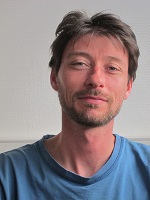
Julien Némery is a Senior Lecturer at the Ecole Nationale Supérieure Energie, Eau, Environnement of the Institut des géosciences de l’environnement (IGE). His research focuses on the biogeochemical cycles of nutrients (nitrogen, phosphorus) and the dynamics of suspended sediments in aquatic environments impacted by human activities. Julien Némery studied biogeochemistry and environmental sciences atUniversité Pierre et Marie Curie (Paris 6). In 2003 he defended his doctoral thesis on phosphorus mobility and eutrophication risk assessment in the Seine catchment area. Since 2004, he has been conducting research at the Institut des géosciences de l’environnement (IGE) on different aquatic ecosystems (rivers, reservoirs, estuaries) and in different regions of the world (French Alps, Seine Basin, Mexican Highlands, Red River Delta and Saigon River in Vietnam).
-
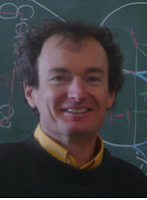
François Nicot is currently Research Director in the ETNA Unit of the Institut national de Recherche en Sciences et Technologies pour l'Environnement et l'Agriculture (IRSTEA), where he is in charge of the Geomechanics group. his work focuses on the mechanical behaviour of granular materials, with a particular interest in multi-scale approaches. The fields of application mainly concern the modelling of the behaviour of geomaterials, as well as the analysis of the stability of slopes and protective structures against risks of gravity origin, in the continuity of the Groupe de Recherche (GDR) MeGe (Approches multi-physiques et multi-échelles en mécanique géo-environnementale), to whose animation he contributed between 2008 and 2015, he participates in the coordination of the GDR International Geo-Mech. Author of more than 100 articles published in international journals, as well as numerous collective works, he is also editor-in-chief of the international journal EJECE (European Journal of Environmental and Civil Engineering).
-
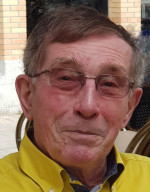
The Université of Reims Champagne-Ardenne is developing a scientific project around 4 major poles with strong scientific expertise. A multidisciplinary pole with an international dimension in agro-sciences, environment, biotechnologies and bio-economy taking into account, in a territory with a strong agricultural and wine-growing economy, the agriculture of the future; a Health center, carrying scientific niches of excellence and a rich and varied medical and paramedical training offer; a digital and engineering sciences center around high performance computing, industry 4.0, materials and technological transformations; and a Humanities and Social Sciences pole with in particular the development of a new axis around the performing arts federated by the creation of a House of Human Sciences. It offers an attractive multidisciplinary training offer that meets current and future socio-economic needs, and aims to bring the student to the best level of training. The University of Reims Champagne-Ardenne in figures: 28,500 students, 2,500 staff, 30 research laboratories, 14 components, more than 120 diplomas.
-
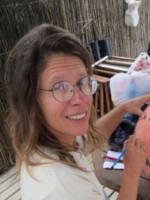
Doctor, associate professor at the Université d'Aix-Marseille, CNRS Laboratoire d'Informatique et Systèmes, DYNI team
-
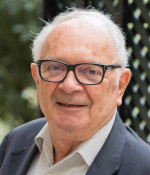
Alain Pavé is Professor Emeritus at the Université Claude Bernard Lyon 1, where he was attached to the Laboratoire de Biométrie et de Biologie Évolutive. His scientific specialties include mathematical modelling and simulation of biological and ecological systems, bioinformatics and environmental sciences. Director of URA 243 « Biométrie, Génétique et Biologie des Populations » (1988-1995) in Lyon, Alain Pavé was Deputy Director of the CNRS Programme Environnement (1990-1994), Director of the Programme Environnement, Vie et Sociétés (1994-1998), Director of the UPS CNRS-Guyane (2002-2010) and Director of the CNRS Programme Amazonie (2004-2011). His website, http://www.alain-pave.fr/, presents his professional background, some personal information and his main publications (articles and books). Alain Pavé has published La Nécessité du hasard (2007), La Course de la gazelle (2011) and Les Cailloux du Petit Poucet (2015), as well as Comprendre la biodiversité (2019) au Seuil. He is the author, with Gaëlle Fornet, of a book entitled Amazonie, une aventure scientifique et humaine du CNRS, Ed. Galaade, Paris. 2010. He has participated in several scientific films, television and radio broadcasts, mainly around the Amazon. Alain Pavé is a member of the Académie des technologies (2002) and a correspondent of the Académie d'agriculture de France (since 2000).
-
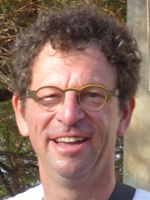
After having managed the UMR 6042 GEOLAB in Clermont-Ferrand for nine years, Jean-Luc Peiry has been seconded to the l’Unité Mixte Internationale « Environnement, Santé, Sociétés » in Dakar since September 2016, where he is deputy director. A physicist geographer, he is a specialist in fluvial hydrogeomorphology and works on the transformation of rivers by humans and on the interactions between hydrogeomorphological and ecological processes (alluvial vegetation, benthic microorganisms). In Senegal, he is involved in research conducted in the Sahel region in connection with the development of the Pan-African Great Green Wall as part of the activities of the International Tsekere Observatory on People and Environments. His research focuses on the hydrology (water resource and quality) of temporary rainy season pools, pond/plant biodiversity interactions, and carbon sequestration by Sahelian tree species.
-
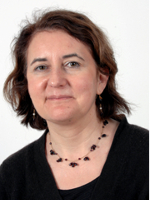
My first position, after graduating as a meteorological engineer in 1982, was as a research fellow in the Climate Science Department. In 1985, I followed my husband to Brazil where I prepared a doctorate at the Instituto de Pesquisas Espaciais de Saõ José dos Campos. Back in France after ten years abroad, I returned to Météo-France as a portfolio manager for strategic projects related to observation or management information technology at the Météo-France Department. In 2001, I joined the Observation Systems Department, where, as Quality Manager, I led the process that enabled this Department to obtain ISO-9001 certification in 2005. I then returned to the General Management in 2007 as head of internal communication for the establishment. Since 2013, I have been in charge of the Documentation Department, and as such, I deal with partnerships with the BNF and the CNAM.
-
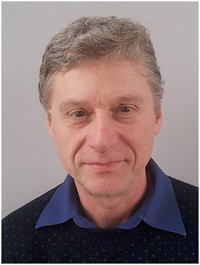
Emile PEREZ is Director of Research at the CNRS in chemistry, currently co-director of the SMODD group in the IMRCP laboratory at the Université Paul Sabatier in Toulouse. He holds a PhD from the Université Paul Sabatier in Toulouse (France) obtained in 1987. He also has a master's degree in molecular and supramolecular chemistry. His research is in the field of chemical and physico-chemical studies of molecular systems organized for biotechnological applications or material design. In the SMODD group, his interest focuses more particularly on the use of molecular systems organized for sustainable development: bioinspired systems and/or recyclable green materials, molecular economics (reactivity, bioactive formulations). He also teaches formulation in master2 at the Université Paul Sabatier.
-
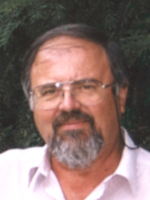
Retired geologist from CEREMA's laboratoire de Nice (CETE Méditerranée). Geology and geotechnics of road alignments, geology of tunnels in rocky massifs. Geology of random ground movements. Cartographic studies (PPR, PLU, communal maps, etc.). Responsible for monitoring the Glide of the Clapière at St Etienne de Tinée (06).
-

Researcher on the biological and health effects of radiofrequencies for more than 20 years for the Army Health Service (CRSSA / IRBA) then at the Université Grenoble-Alpes (UGA). Member of the group of experts for the AFSSET “Radiofréquences” report 2009. Membre du Haut conseil de la santé publique (HCSP) in the specialized commission on environmental risks from February 2017 to July 2019. Former president of the French Association Française pour l'information scientifique (AFIS). Currently a member of the Société française de radioprotection (SFRP), of the Association européenne de bioélectromagnétisme (EBEA), and of the Société francophone de santé et environnement (SFSE).
-
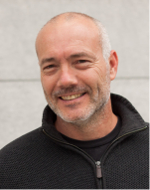
Hervé Piegay is a geographer and CNRS Research Director at the laboratoire EVS (ENS de Lyon). He works mainly on the geomorphology of river systems, around the challenges of river management and restoration. He is also interested in new techniques for diagnosing and monitoring the effect of actions. It works in interaction with practitioners (Water Agencies, Regions, Ministry of Ecology, AFB, Compagnie Nationale du Rhône, EDF, local authorities). He coordinated an international team on the revitalization of the Rhine downstream of Kembs, research programs on the evaluation of river restoration projects and the state of braided rivers in the Rhône basin. Since 2010, he has been leading the scientific team of the Rhône Valley Human-Media Observatory. He has contributed to more than 230 scientific articles in specialized journals and book chapters. He has coordinated several synthesis works, such as river geomorphology tools with M.G. Kondolf of the University of Berkeley (2003, 2016). He has been co-leading since 2018 with C. Douady and S. Barraud H2O'Lyon, a University Research School focused on integrated watershed management.
-
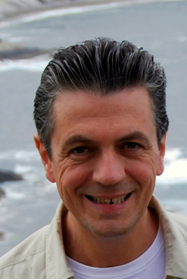
Jean-Paul Pique, a former student of the ENS de Cachan and agrégé de Physique, was Director of Research at the CNRS in the speciality "Atoms and molecules, optics and lasers". He is now a Scientific Collaborator at Laboratoire Interdisciplinaire de Physique (LIPhy), a joint Université-Grenoble-Alpes and CNRS unit. During his career, he first used non-linear optical methods to study crystallographic phase transitions in solids. He then turned to the spectroscopic study of molecules. Using the first ultra-high resolution lasers, he studied interactions involving the properties of the atomic nucleus and showed for the first time a symmetry break inducing the reversal of the nuclear spin. During long stays in the United States at MIT, he studied the correspondence between classical chaos and "quantum chaos" in the very high resolution spectra of polyatomic molecules. Laser technology having made spectacular progress, particularly at LIPhy, he has developed close collaboration with researchers from observatories in Lyon, Grenoble and Hawaii in the context of laser star projects. He is currently working on a patent for a new type of laser with multiple applications such as THz imaging, lidar (optical radar), metrology and spectroscopy. He is the author of about 100 articles published in international scientific journals, two patents and has directed a dozen theses.
-
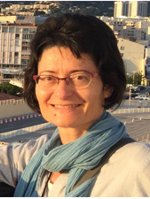
Engineer at the School of Meteorology, Marion Pithon joined the "Environment and Health" division of the Department of Meteorological Services of Météo France in 2009, where she is in charge of the operational production of the regional component of the CAMS project (COPERNICUS-Atmosphère), which provides Air Quality services in the European domain, thanks to the contribution of about ten European chemistry-transport models. Correspondent of the "Health" commission of the High Council of Meteorology, she also participates in the activities of the establishment in bio-meteorology, on environmental themes, in relation with health organizations.
-
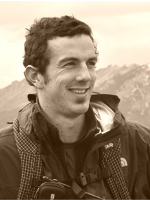
Guillaume PITON studied at the Institut National Polytechnique de Grenoble in the former School of Hydraulics and Mechanics, now called ENS de l'Energie de l'Eau et de l'Environnement (ENSE³). He then worked as a hydraulic engineer from 2009 to 2013 at ARTELIA (formerly SOGREAH), on the Grenoble and Chambéry sites. He has carried out multiple water study and development missions: hydrology, hydraulic modelling, design of flood protection and river rehabilitation works, site preparation and execution control, impact study and regulatory file. In 2013 he joined the IRSTEA (ex-CEMAGREF) to carry out a doctoral thesis on the control of solid transport of torrents by torrential correction works and deposition ranges. This work has made it possible to combine experimental approaches with field analyses and historical research. Since his defence in 2016, he still works on mountain hydraulics and risk protection. He is now permanent researcher in the ETNA research unit of INRAE (merger of IRSTEA and INRA).
-
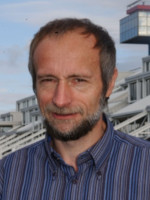
Serge Planton, 64, is a retired general engineer for bridges, waters and forests. He was responsible for the climate research group for twenty years at the National Center for Meteorological Research at Météo-France (Météo-France / CNRS joint laboratory). His research in climate modeling has led him to focus more specifically on the issue of attributing the causes of observed climate change, especially in France, whether of natural or human origin. He participated in the work of the IPCC and contributed to the preparation and writing of reports on climate change and its effects in France. He is currently a member of the Météo & Climat Association, and Vice President of the Train du Climat Association.
-
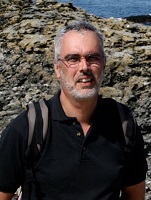
François Pompanon is a professor at the Université Grenoble Alpes. His research activity aimed to understand the mechanisms at the origin of biodiversité́ and its evolution through an environmental genomics approach, using recent developments in molecular biology (New Sequencing Techniques). He has been involved in the development of molecular markers to describe species diversity from environmental samples, including applications in diet characterization. He is currently developing projects to understand the evolutionary mechanisms underlying the adaptation and domestication process in small ruminants through sequencing of complete genomes.
-
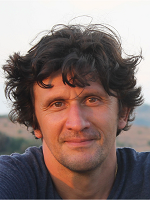
Jérôme Poulenard is Professor of Soil Sciences at the Université Savoie-Mont Blanc and is assigned to the Laboratoire EDYTEM (Environnement DYnamique et TErritoire de Montagne). He studies the history and functioning of soils in mountain areas. By using lake sediments as natural archives, he aims to reveal the memory of ecosystems and to reconstruct the history of the relationship between humans and the soil. He is responsible for the research theme "Long-term trajectories of mountain socio-ecosystems" common to the LECA/CARRTEL/LCME/EDYTEM laboratory at UGA. He is also Director of Studies for the EPGM Master's Degree in « Equipements, Protection et Gestion des milieux de Montagne » at the Université Savoie Mont Blanc.
-
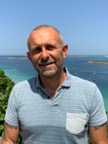
Stéphane Pouvreau is an Agronomist and holds a doctorate in Fisheries and Aquaculture. He was recruited in 2000 at Ifremer and is currently working in the LEMAR research unit on the Ifremer experimental site in Argenton- en-Landunvez. He conducts research in the ecology and ecophysiology of marine invertebrates, in particular on marine bivalves of economic, heritage and ecological interest (oysters, scallops, scallops, etc.). At the national level, he is responsible for the VELYGER observatory, an observation network that ensures the smooth reproduction of the hollow oyster (the first French aquaculture species). At the regional level, he is in charge of research projects on the ecological restoration of endangered native bivalves (Flat oyster and scallop). More locally, he co-leads the Zone Atelier Brest Iroise (ZABRI), an interface between Science, Sea Professionals and Civil Society. In general, his research projects are interested in the effects of environmental factors on the reproduction and recruitment strategies of marine bivalves, particularly in the dual context of climate change and the erosion of biodiversity. Its work is generally based on the implementation of monitoring and field experiments in ecology, the acquisition of long-term time series and their analysis using statistical tools and numerical modeling. To carry out his research projects, he is also a professional scientific diver.
-
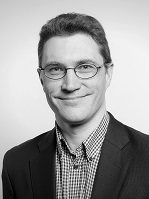
Olivier Pujol is a doctor in atmospheric physics, qualified to direct research and a physics associate. After studies at the Université Paul Sabatier in Toulouse and a thesis at the Laboratoire d'aérologie (Observatoire Midi-Pyrénées) on precipitating systems and their observation by microwave remote sensing, defended in 2006, he became a lecturer at the Université de Lille, at Laboratoire d'optique atmosphérique. There, his research activities extend to the study of water vapour, aerosol-cloud couplings and light-matter interaction in the field of atmospheric optics. He has also collaborated with the industrial world (Thalès) and is a co-inventor of patents. In 2013, he obtained the HDR. He teaches in Bachelor's degree, in preparation for the external agrégation of physics and in the international Master 2 "Atmospheric Environment" in the unit "Physics of the atmosphere". He participates in a national competition as an author of physics subjects and, for the past ten years, has also co-authored several higher education books.
-
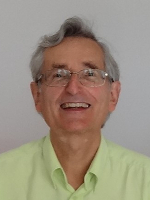
Alain Puppo is Professor Emeritus at the Université de Nice - Sophia-Antipolis. Holder of a PhD in Plant Biology, he has devoted most of his career to the study of the symbiosis of nitrogen fixing Legumes - Rhizobium. After a postdoctoral fellowship in Professor Barry Halliwell's Laboratory at King's College London, he focused on examining the role of Active Oxygen Species in signal exchange between symbiotic partners. He is the author of more than 100 scientific publications and has coordinated two Marie Curie European research and training networks. He has also been involved in the training of teachers in Life and Earth Sciences and was a member of the CAPES jury. He was Deputy Director of the INRA - CNRS - Université de Nice-Sophia Antipolis Joint Research Unit « Interactions Biotiques et Santé Végétale » in Sophia-Antipolis, and a member of the Conseil National des Universités et du Comité National de la Recherche Scientifique.
-
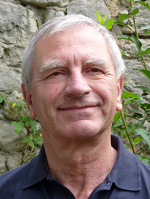
Dominique Raynaud is a glaciologist and paleo-climatologist. His career at the CNRS has been mainly dedicated to studying the air trapped in the ice of Antarctica and Greenland and decoding his climate messages. His contributions cover areas such as the past altitude of ice caps using the air content of ice as a paleoaltimeter and a tool to constrain ice core chronologies, the isotopic composition of trapped air (18O and 15N), the study of the N2/O2 ratio, pioneering measurements of atmospheric CO in ice. His most famous contribution, with his team at the Institut des Géosciences de l'Environnement (IGE), concerns the reconstruction of the composition of CO2 and CH4 and the understanding of the link between greenhouse gases and climate on the scale of glacial-interglacial cycles and putting into perspective their increase since the beginning of the industrial era. Dominique Raynaud was Director of the LGGE from 1995 to 2002. He has been a member of the Groupement intergouvernemental d’experts sur l’Évolution du Climat (GIEC) since 1992 and as such co-winner of the 2007 Nobel Peace Prize.
-

A graduate of the Ecole Nationale de la Météorologie and holder of a PhD from the University of Toulouse 3, Laure Raynaud is a researcher in numerical weather prediction at the a href="http://www.encyclopedie-environnement.org/institutions/#CNRM">Centre National de Recherche Métérologique. Her research focuses mainly on data assimilation and probabilistic forecasting. She regularly collaborates with a number of application fields (agriculture, energy, transport). Her recent work focuses on artificial intelligence methods and their use in the calculation and operational exploitation of weather forecasts. She holds a chair at the Toulouse Artificial Intelligence Institute (ANITI).
-
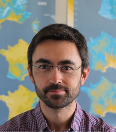
Researcher at CNRM since 2009 on the theme of human influence on climate, an area known to specialists as the "detection and attribution" of climate change. In particular, I work on statistical methods to quantify human influence on both average climate and extreme events.
-
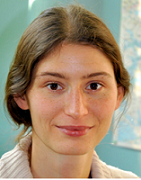
Camille Risi prepared her doctoral thesis, entitled "Stable water isotopes and their applications for the study of the water cycle and climate variations" at Laboratoire de Météorologie Dynamique (LMD, Paris) from 2006 to 2009, under the supervision of Sandrine Bony and Jean Jouzel. She then went on to study this subject during a post-doctoral stay in the United States at the University of Colorado at Boulder, under the direction of David Noone. Since 2011, she has returned to LMD as a research fellow at the CNRS. The general purpose of its work is to assess climate models and the credibility of their projections. To do this, it uses observations of the isotopic composition of water, particularly in the vapour phase, provided by satellites. Using isotopic models, she interprets the composition of water as a tracer of different processes during the water cycle, particularly convective and cloudy processes, both in current and past climates.
-
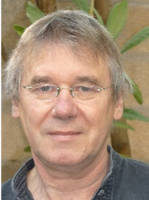
Entomologist with 35 years of experience in the biology, ecology and behaviour of forest insects. From 2004 to 2017, he headed the Unité de Zoologie Forestière of the INRA. His current activity focuses on studying the mechanisms underlying terrestrial invertebrate invasions and studying insect responses to climate change. In particular, he coordinated the inventory of exotic terrestrial invertebrates in Europe and the publication of a reference book on the relationship between climate change and processionary caterpillars.
-
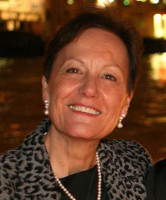
After a doctorate in Biochemistry / Nutrition (properties of walnut oil in cardiovascular diseases), I joined the Laboratoire de Biologie du Stress Oxydant (Director: Alain Favier) and contributed, as Associate Professor then Professor, to the development of Research "Micronutrients and oxidative stress". Convinced from the 80s of the importance of Nutrition in the prevention of oxidative pathologies (metabolic syndrome, cardiovascular diseases, cancers, etc.), I formed my own Research group (NVMC, EA 3746) and then joined the Bioenergetics Laboratoire de Bioénergétique Fondamentale et Appliquée, INSERM Unit 884 (Director: Xavier Leverve) by providing a nutritional theme “relationships between mitochondria, antioxidants and cognitive functions”: set of activities carried out in partnership with the food industry (Danone, Nestlé, Unilever, Aguettant ..) or the public authorities (ANR and European contracts, Unesco, ILSI) so that Nutrition is recognized in Public Health. As Professor Emeritus at the UGA (Faculté de Pharmacie of UGA), I continue to defend nutritional prevention by promoting exchanges between research laboratories and the food industry and by participating in "Nutrition" lessons intended for Health professionals.
-
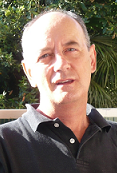
Frank ROUX has been a Professor at the Université Toulouse 3 Paul Sabatier since 2003, after having been a Chargé and then Director of Research at the CNRS since 1981. His research, conducted at Laboratoire d’aérologie in the « Atmosphère, Océan et Couplages » team, focus on atmospheric disturbances in tropical and mid-latitudes (storms, storms, cyclones), based on in situ and remote sensing observations (radar and satellite) as well as on numerical simulations, in order to better understand the dynamic, thermodynamic, microphysical and electrical processes that explain their structure, evolution and predictability. In recent years, he has focused his attention on the initial conditions of cyclone formation in relation to large-scale disturbances in the tropical atmosphere.
-
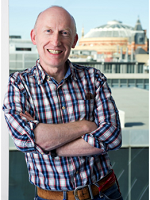
A. William (Bill) Rutherford is Professor (Chair of Solar Energy Biochemistry) in the Department of Life Sciences at Imperial College London. He had previously exercised part of his scientific career as CNRS Research Director at CEA-Saclay. Using biophysical methods, Bill Rutherford explores the structure and function of photosynthetic reaction centres. His main interest is in Photosystem II (PSII), and in particular the enzyme complex that catalyzes the oxidation of water to supply electrons to carbon binding mechanisms. Oxygen, a by-product of water oxidation, has accumulated in the atmosphere. In his efforts to mimic photosynthesis reactions, Bill Rutherford often uses the active IEHP site as a reference and model. His work on photosynthesis aims to improve efficiency for more sustainable energy production. Bill Rutherford was elected a Fellow of the Royal Society in 2014.
-
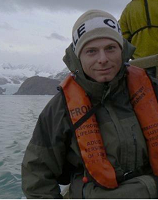
Pierre Sabatier is a lecturer in geology at the Université Savoie Mont Blanc assigned to the laboratoire EDYTEM (Environnement DYnamique et TErritoire de Montagne). He is working to reconstruct the past climate and environment from sediment cores collected mainly from lakes. In order to understand past variations, he uses sedimentological, geochemical and geochronological methods. He is responsible for the laboratory's « Archives environnementales » team and has published more than 30 scientific articles on climate and past environments in peer-reviewed journals. Between 2012 and 2015 he was a member of the CNRS national committee in section 19 « Système Terre : enveloppe superficielle ».
-
David Saint-Martin has been a researcher at the CNRM (Centre National de Recherches Météorologiques de Météo-France and of the CNRS) since 2010. His research work mainly concerns climate modeling. It contributes to the development of the CNRM climate model, in particular with regard to the atmospheric component.
-
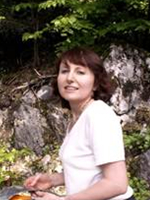
Sandrine Salmon is an Engineer at the Muséum National d’Histoire Naturelle, Unité Mécanismes Adaptatifs et Evolution (UMR 7179 MECADEV), in the ECOTROP team. After an initial training in plant biochemistry, she entered the Muséum National d’Histoire Naturelle to study soil invertebrates and completed a thesis on the effect of abiotic factors (acidity...) and interactions between species (predation, commensalism) on soil arthropod populations (Collembolas). She then became involved in numerous research programs on the impact of forest dynamics, forest management practices, agri-environmental and agricultural practices on biodiversity and soil functioning (organic matter mineralization). At the same time, it is creating a Collembola trait database (Coltrait) to understand the functional aspects of studying soil communities. This database has led to numerous collaborations in France and around the world as well as the contribution to the BETSI soil invertebrate database. More recently, Sandrine Salmon has been involved in research in tropical ecology, including a project on the recolonization of lava flows on Reunion Island. Currently, she is initiating research on communication between arthropods in the soil. His work has resulted in some 40 research articles published in international journals.
-

Doctor of the Muséum National d’Histoire Naturelle in ecotoxicology, Wilfried SANCHEZ worked for more than 10 years at the interface between research and expertise in the field of emerging pollutants and their effects on aquatic organisms. He then turned to the animation and management of research by taking the direction of the Rovaltain Foundation, a scientific cooperation foundation specializing in toxicology and ecotoxicology. Since 2018, he has been Deputy Scientific Director at Ifremer, where he is more particularly in charge of the scientific policy of the Institute in the Mediterranean and the theme of "contaminants and effects in the marine environment".
-

After studying physics at the ENS, Bernard Saugier developed microclimatic measurements to study the gas exchange of crops and meadows, as a researcher at the CNRS in Montpellier and in Saskatoon (Canada). Then as a professor at Orsay (Laboratoire d’Ecophysiologie végétale of the Ecology-Systematic-Evolution unit), he and his team built water and carbon balance models for forests, studied the production of biomass and then the effect of an increase in the CO2 content of the air, and extended these studies to a continental scale with satellite measurements.
-
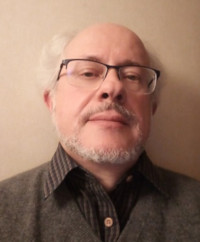
A geophysical engineer, I joined the CEA to participate in geophysical studies, then seismology. Responsible for the Polynesian Center for Tsunami Prevention in the 1990s, I represent France in the coordination group of the tsunami warning system in the Pacific (Unesco) which I chaired. Seconded to Unesco in 2005 to coordinate the establishment of the warning system in the Indian Ocean, have since established and then coordinated the National Tsunami Warning Center, and contributes to the coordination group for the Mediterranean and North Atlantic -est, as well as research projects.
-
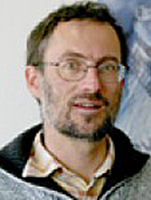
Philippe Schoeneich is a geographer-geomorphologist. He did a thesis at the University of Lausanne on glacial geomorphology of the Vaud Pre-Alps (Switzerland). Since 2001, he has been professor of physical geography at the Institut de Géographie Alpine (IGA) in Grenoble. His work focuses on the geomorphology of mountains, in particular on gravity movements and periglacial phenomena, as well as on natural hazards, including geohistorical approaches. He coordinates an observatory of the mountain permafrost of the French Alps, the PermaFRANCE network. He has directed or co-directed several theses on mountain permafrost and rock glaciers. He is the national correspondent of the GTN-P (Global Terrestrial Network for Permafrost) for France.
-
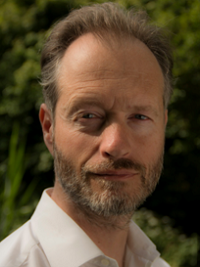
Marc-André SELOSSE is a professor at the Muséum national d’Histoire naturelle, a visiting professor at the Universities of Gdansk (Poland) and Viçosa (Brazil) and a member of the Académie d'Agriculture. His research at the Institut de Systématique, Évolution, Biodiversité (ISYEB, UMR 7205) focuses on the ecology and evolution of associations with mutual benefits (symbioses). Within ISYEB, the Interactions et évolution végétale et fongique Team (INEVEF), led by Marc-André Selosse, is interested in the diversity and evolutionary history of terrestrial plants (Embryophytes) and fungi (Eumycètes) in relation to their interactions with their environment. INEVEF focuses in particular on the study of mycorrhizae, a nutrient symbiosis that has appeared many times in evolution, between the roots of plants and soil fungi. Mycologist and botanist, Marc-Andre Sélosse works in particular on the mycorrhizal symbioses that unite fungi from the soil to the roots of plants. He is interested in the specific and genetic diversity of the fungi involved, and in the evolution of these symbioses (especially in orchids). He teaches in various university courses and at the Ecole Normale Supérieure and contributes to various SVT teacher training courses. President of the Société Botanique de France, he is the editor of three international scientific journals (Symbiosis, The New Phytologist and ABG - BotanyLetters). He has published nearly a hundred research articles and as many popularization articles, all freely downloadable online.
-
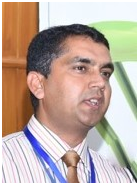
Wasim Shehzad is currently Director of the Institute of Biochemistry and Biotechnology in Lahore, Pakistan. His research covers a wide range of fields using non-invasive DNA sampling in complex biological materials from food remains or soils. The quality and quantity of such DNA is low compared to DNA extracted from tissue samples. This approach is applicable to the identification of rare and threatened species, as it does not require direct contact with these species, which are generally very difficult to study. With the advent of high throughput sequencing and meta-barcoding approaches, it is now possible to generate millions of sequences from many biological species from a single sample. Using these approaches to study the diet of endangered cats in South Asia, Wasim Shehzad supported a PhD from the Université de Grenoble, under the supervision of Pierre Taberlet and François Pompanon au Laboratoire d'Ecologie Alpine (LECA).
-
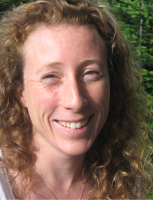
Delphine SIX carries out most of her observation and research activities on glaciers in the French Alps. A specialist in mass and energy balances of glaciers, she currently coordinates a French National GLACIOCLIM Observation Service whose objective is to federate the glaciological community (and beyond, the cryosphere community) in France. Author or co-author of 40 publications in scientific journals, she also teaches Geosciences at the Université Grenoble Alpes. It is part of the IGE (Institut des Géosciences de l’Environnement)
-

Joël SOMMERIA, a physicist by training, is a research director at the CNRS, where he has spent his entire career. He obtained a PhD in Grenoble in 1985 on magneto-hydrodynamic turbulence and its links with two-dimensional turbulence. He then turned his attention to the processes of self-organization of turbulence. He explained the formation of large atmospheric eddies such as the Great Red Spot of Jupiter by the statistical mechanics of eddies, and reproduced this phenomenon in the laboratory. He proposed that such eddies initiate the formation of planets in the proto-planetary nebula. Since 2000, he has been in charge of the large "Coriolis" rotating platform in Grenoble, which reproduces the dynamics of atmospheric or oceanic flows. This instrument belongs to the LEGI (Laboratoire des Écoulements Géophysiques et Industriels). Joël SOMMERIA is the author of about a hundred scientific publications and co-author of a book for the public "La Physique et la Terre" (Belin and CNRS-éditions, 2000).
-

Marc Souris is Director of Research (Emeritus) at the "Institut de Recherche pour le Développement" (IRD), and a member of the IRD-AMU-INSERM UMR 190 UVE "Emerging Viruses Unit". A mathematician and computer scientist, his work focuses mainly on information sciences applied to geography and epidemiology. The author of numerous scientific articles, software programmes and books, he has taught the fundamentals of geomatics and spatial analysis for epidemiology and health geography. Marc Souris has also been involved in France's scientific diplomacy in Southeast Asia as IRD's representative in Laos and Cambodia.
-

Peter Streb is a Senior Lecturer at the laboratoire d’écophysiologie végétale at the Faculté des sciences d’Orsay (université Paris sud XI). He is working on the effect of environmental stress on plants, in particular variable temperature and saline stress in combination with strong light. Much of his work is done in the Alps on a few alpine species. His studies aim to understand how plants acclimatize to harsh conditions and how the photosynthetic apparatus is protected under strong light.
-
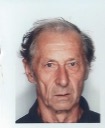
André Temperville is Professor Emeritus at the Université de Grenoble Alpes. Former student (agrégé in mathematics) of the Ecole Normale Supérieure de l'Enseignement Technique (1957-1961), he began a teaching career at the Ecole Nationale Supérieure des Arts et Industries Textiles de Roubaix (1961-1965), at the Ecole de l'Air de Salon de Provence (1962-1964) and at the Ecole Nationale Supérieure des Arts et Métiers in Cluny (1965-1968). He began his research career in 1968 at the Laboratoire des Ecoulements Géophysiques and Industriels as a research professor at the Université de Grenoble Alpes where he obtained his state thesis in 1985. His research themes are oriented towards gravity waves, hydrodynamics and sediment transport in coastal areas.
-
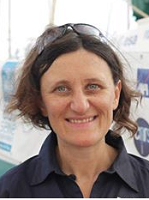
Alexandra TER HALLE is a Research Officer at the CNRS in Chemistry. After studying at the Ecole Normale Supérieure de Lyon from 1993 to 1997, she obtained her doctorate in organic chemistry in 2000 at the Université Claude Bernard in Lyon. His research then focused for seven years on the impact of irradiations on organic contaminants at the Laboratoire de Photochimie Moléculaire et Macromoléculaire in Clermont-Ferrand (LPMM, UMR 6505 CNRS - Université Blaise Pascal, Aubière). She initiated and coordinated various projects (ANR Ecophyto, FUI PHYTOMAR and industrial partnership with Syngenta). At IMRCP (Université Paul Sabatier, Toulouse) since September 2011, she has been studying biodegradable materials used in environmental chemistry. She is the scientific coordinator of the French program "Expedition 7th continent" dedicated to the study of plastic pollution in tropical gyresub-tropics. She is the author of approximately forty-five publications and four patents.
-
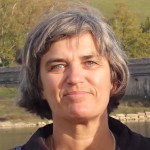
Ecologist and scientific mediator (in environmental sciences), I collaborated for a long time in the research and scientific diffusion activities of the Muséum national d’Histoire Naturelle (MNHN) before joining the Institut de la Transition Environnementale de Sorbonne Université (SU-ITE), where I collaborate since 2017 on several interdisciplinary projects. I am also responsible for scientific mediation by the Société Française d’Écologie et Évolution (SFE2) and member of the Conseil d’Orientation Stratégique de la Fondation pour la Recherche sur la Biodiversité (FRB).
-
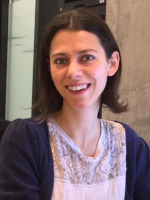
Sophie Thirion is currently a doctoral student in international law at the Université de Lausanne. She holds a Master's degree in environmental law and a Certificate of Qualification to Practise as a Lawyer (CAPA), and has mainly experience in international environmental protection organizations. She has worked for several UN organisations on the issue of hazardous substances, for NGOs and for intergovernmental institutions such as the Council of the European Union in Brussels.
-
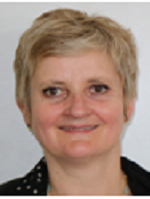
Muriel Thomas is Director of Research at INRA and conducts her research at the Institut Micalis. She is co-author of 43 publications, 3 patents and 5 book chapters. For the past 10 years, his group has been interested in the "health" effects of bacteria in digestive and respiratory physiology. We studied the effects of the microbiota on homeostasis, renewal and secretory/absorptive functions of the intestinal epithelium in gnotobiotic animals carrying groups of bacteria representative of the newborn, the healthy adult, the adult with intestinal deficiency and food bacteria. From animals carrying simplified microbiotes, we have described the specific effects of different bacterial consortia on the colon epithelium. We have also recently expanded our scope of investigation to include the effects of the pulmonary microbiota on respiratory health. Our approach, at the border between physiology and microbiology, is supported by private or academic funding and contributes to the development of knowledge and applications related to intestinal and pulmonary microbiomes.
-
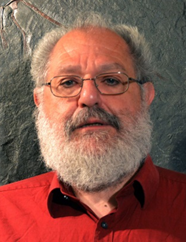
Pierre Thomas is a geologist and professor at the Ecole Normale Supérieure de Lyon, where he has been working since 1987, after a few years at the CNRS. Most of his research has focused on the geology of the solar system, particularly Mercury, Mars and the satellites of Jupiter. In addition to planetology, he also teaches the history of the Earth and climates, the origin of life... He is best known for his involvement in the dissemination of knowledge to the general public and in the training (initial and in-service) of high school teachers. He is the on-site scientific manager planet-terre.ens-lyon.fr, the site of the Ministère de l’Education Nationale for the continuing training of SVT teachers. Its reference laboratory is the Laboratoire de Géologie de Lyon : Earth, Planet, Environment.
-
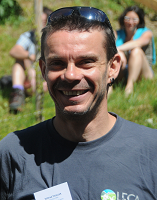
Wilfried Thuiller is CNRS Research Director at Laboratoire d'Ecologie Alpine (LECA) since 2005. Responsible for an ERC between 2012 and 2016, his research projects aim to better understand the spatial and temporal dynamics of biodiversity in order to understand the impact of global changes on ecosystems.
-
THUILLET Anne-Céline Researcher at IRD, UMR DIADE (Diversité Adaptation et Développement des plantes
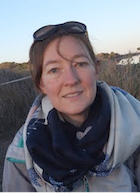
Researcher at IRD, my research focuses on the evolution and adaptation of cultivated plants, from a historical point of view (trajectories of domestication and genetic diversity through the history of plants) or on a more contemporary scale (evolutionary response of crops to present and future environmental challenges). In general, I am interested in the problems that agriculture must face to feed the world while ensuring its sustainability.
-
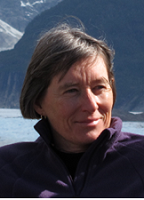
Irène Till-Bottraud is Research Director at the CNRS. She directed the Laboratoire d'Ecologie Alpine in Grenoble from 2011 to 2015 after having been deputy director since 2004. Her research focuses on the adaptation of species to alpine environments (Alps and Andes): study of the reproduction system, population dynamics and variation of adaptive traits along altitudinal gradients. She is currently a researcher at the Laboratoire de Géographie Physique et Environnementale, Université Blaise Pascal, Clermont Ferrand.
-
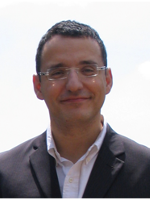
Jean-Nicolas Tournier is a researcher at the Institut de Recherche Biomédicale des Armées (IRBA) in the field of infectious diseases and is particularly interested in their prevention and treatment. He is a doctor of medicine and a doctor of biology. He has worked on host-pathogen interactions in the anthrax disease model. He is a professor at the École du Val-de-Grâce and a visiting scientist at the Institut Pasteur in the field of vaccinology. He is the author of about fifty publications and book chapters covering these scientific fields.
-
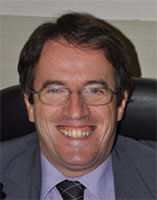
Yannick Vallée began his career in Caen, as a CNRS researcher, and has been a professor of chemistry in Grenoble since 1993. He is Director of the Chemistry and Biology Department of the Université Grenoble Alpes and conducts his research within the Département de Chimie Moléculaire (DCM). He has worked for a long time on organic synthesis, starting with small unstable, potentially interstellar molecules, before turning his attention to more complex molecules of biological interest. More recently, he has turned to the organic chemistry at the origin of life, questioning in particular the specific role that sulphurous amino acids (methionine, then cysteine) may have played in the primitive ocean.
-
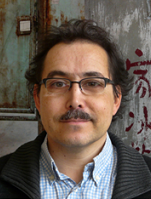
Jean Vannier is a paleontologist, research director at the CNRS and works at Laboratoire de Géologie de Lyon : Terre, Planètes, Environnement. He is mainly interested in the origin of animal life. He studies fossil deposits of exceptional preservation that cover the Precambrian-Paleozoic transition and provide very precise information on the distant ancestors of modern animals and on the functioning of primitive ecosystems. His international collaborations have led him to work on Canadian (Burgess Shale), Chinese (Chengjiang), Moroccan (Fezouata) and Russian (White Sea) sites. He is currently focusing his research on the Precambrian and the stages of animal evolution that precede the Cambrian Explosion.
-
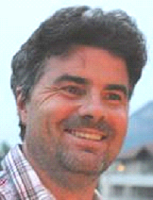
Pierre Vauclare is a physiobiochemist and metabolic specialist in higher plants and lake microalgae. He prepared his doctoral thesis "Structure, biogenesis and expression of the T protein of the glycine decarboxylase complex of higher plants" under the supervision of Prof. Roland Douce at the laboratoire de Physiologie Cellulaire Végétale in Grenoble. After postdoctoral fellowships in the United States (University of Louisiana) and Switzerland (Universities of Bern and Lausanne), he joined the Institut de Biologie Structurale de Grenoble in 2012 as a "Handicap" research fellow at the CNRS, within the ELMA laboratory (Extremophiles et grands assemblages moléculaires) directed by Bruno Franzetti. Since then, his work has focused mainly on the study of the physico-chemical and physiological mechanisms of micro-organisms in extreme environments.
-
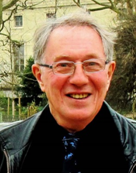
Michel Veuille, after training in genetics, was a CNRS researcher in Gif-sur-Yvette, then became Director of Studies at the Ecole Pratique des Hautes Etudes (EPHE, Paris). He prepared his thesis on the mechanisms of speciation and sexual selection. He studied sexual selection by repeatedly observing hundreds of genetic twins of fruit flies obtained by crossing lines made homozygous throughout their genome. This allowed him to refute or confirm hypotheses about the adaptive nature of sexual choices. A post-doctoral fellowship at Richard Lewontin's Harvard University (USA), allowed him to participate in the first research on DNA sequence polymorphism and, upon his return to France, to search for the molecular signature of natural selection in the genome. He has conducted numerous studies on this topic in African populations of Drosophila, demonstrating through coalescence theory that selection has had a positive effect on certain genes in the species' past. In addition to his scientific research, he has conducted several studies in the history of the theory of evolution, notably in collaboration with the philosopher Jean Gayon. From 1999 to 2007, Michel Veuille created and managed a CNRS unit without walls, the Evolutionary Genomics Research Group (GDR), bringing together a group of French, Belgian and Swiss teams studying the molecular genetics of populations. This GDR, later directed by Xavier Vekemans, contributed to the development in France of applications of coalescence theory. From 2003, Michel Veuille participated in the reform of the Museum by becoming the first director of the Systematic and Evolution department, which during his term of office saw the creation of an important laboratory, the UMR CNRS 7205 "systematic, evolution, biodiversity", which has since become the institut ISYEB (CNRS, EPHE, MNHN, UPMC). He was encouraged in this endeavour by the two directors of the Museum appointed after its reform, Bernard Chevassus and André Menez. He has had numerous research evaluation missions in France (notably at the Ministry of Higher Education and Research) and internationally. He was for a long time editor of the international journal Genetics. He was dean of EPHE.
-
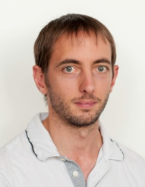
Benoît Vié is a Bridges, Water and Forests engineer, assigned to the CNRM as a researcher since 2014. His research work focuses mainly on the physics of clouds, and more particularly on improving their representation in digital models of weather forecast.
-
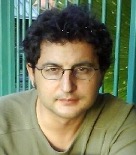
Director of Research at the Institut de Recherche pour le Développement (IRD) in Montpellier. My research focuses on the study of how evolutionary processes have shaped the diversity of populations and genomes. We focus mainly on cultivated plants and their wild relatives. In the case of cultivated plants, we also need to understand how human activities and historical events have shaped their diversity.
-
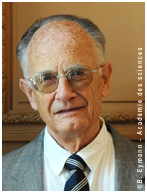
Jacques Villain (1934-2022), was a theoretical physicist from the CEA, was a member of the Académie des Sciences. He was a researcher at the Centre d'Etudes Nucléaires de Saclay (1961-69) and then at the Centre d'Etudes Nucléaires de Grenoble (1970-2010), also conducting research at the ILL (Institut Laue-Langevin), at the ESRF (European Synchrotron Research Facility) and at the Institut de Physique du Solide (IFF) of the Jülich Research Centre in Germany. His research focused mainly on condensed matter (magnetism, surfaces, crystal growth...) and statistical physics. Author of 170 scientific articles, he was also co-author of two specialized books, "Physics of Crystal Growth" (Cambridge University Press, 1998), translated from an earlier French version (Saclay-Eyrolles, 1994), and, "MolecularNanomagnets", (Oxford UniversityPress, 2006). He was also co-author of a book for the general public, "Le kaleidoscope de la Physique" (Belin, 2014).
-
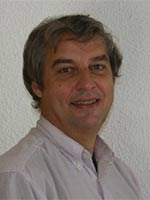
Pascal Villard is a professor at the Université Grenoble Alpes. He teaches in the GCCD (Génie Civil et Construction Durable) department at IUT1 in Grenoble. His research, at Laboratoire 3SR, focuses on the development of numerical models dedicated to the study and dimensioning of structures in soil reinforced by piles and geosynthetics as well as the study of gravity movements (boulder falls and rock avalanches). He has participated in the writing of several synthesis works on the modelling of reinforced soil structures and is co-author with Vincent Richefeu of a work dedicated to the modelling of gravity risks. Attracted by the discrete element method (discretization of soils by a set of interacting grains), he tries to analyze the mechanisms involved in reinforced soil structures with the objective of improving dimensioning methods. Having participated in numerous projects combining intimate full-scale experiments and numerical modelling, he appreciates with interest and consideration the practitioner's opinion and critical view of these works.
-
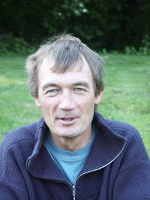
Christian VINCENT is a recognized specialist in glaciological observations. He has conducted numerous measurement campaigns on glaciers in different parts of the world. His missions have taken him to the Alps, the Andes, the Himalayas and as far as Antarctica. His research work focuses on the study of mass balances and glacier dynamics. An important part of its activity concerns the analysis of hazards related to the evolution of glaciers. His work is internationally recognized through more than 80 scientific publications and several books for the general public, and is part of the IGE (Institut des Géosciences de l’Environnement)
-

Flora Vincent is a scientist specializing in marine microbiology. Trained as an agricultural engineer at AgroParisTech, she is completing her doctorate at the École Normale Supérieure for the Tara Oceans program, in which she is interested in the interactions that diatoms establish with other members of plankton. During a post-doctoral fellowship at the Weizmann Institute in Israel, she studies the impact of giant viruses on the marine ecosystem. Now group leader at the marine ecology and environmental microbiology laboratory, European Molecular Biology Laboratory (EMBL), in Heidelberg (Germany), she explores the diversity and impact of marine microbial interactions at different biological scales, with a focus on symbiosis within unicellular eukaryotes (https://www.embl.org/groups/vincent/). It is in this context that she will be one of the scientific coordinators of the Tara Europa program (2023-2024) to study coastal ecosystems all along the European coasts. At the same time, Flora has been particularly involved in the subject of diversity in science by co-founding WAX Science (https://www.wax-science.fr/), an association that promotes science without stereotypes by creating and disseminating innovative tools. She is co-author of the book "Artificial intelligence, not without it!" a book that dissects how algorithms reproduce sexist biases.
-

Quentin Vincent is currently Managing Director of Sol & co. It is involved in the analysis of the (biological) quality of urban soils, to optimize land use and landscape planning. Quentin works on different biological groups (soil fauna, microorganisms and flora) in order to characterize the functioning of the ecosystem. After a master's degree in Ecotoxicology and Ecology of Anthropized Systems (University of Lorraine), Quentin completed a doctorate in Ecotoxicology, Biodiversity and Ecosystem (Université de Lorraine) within the framework of the Lorver project to study the biodiversity of industrial wasteland soils in Lorraine. For 2 years, Quentin worked at the University of Liège in the CARBIOSOL project to create a repository on biological indicators in Walloon agricultural soils.
-

Aurore Voldoire has been a CNRM researcher since 2005. She is responsible for assembling the various components of the climate model developed jointly by the CNRM and Cerfacs, CNRM-CM. It coordinates the evaluation of successive versions of the model which make it possible to carry out the intercomparison exercises of climate models, organized within the framework of the IPCC (International Group of Experts on Climate). She is particularly interested in the coupling processes between the ocean and the atmosphere in tropical regions such as the African Monsoon and the El Nino phenomenon.
-
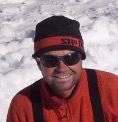
High mountain guide and field glaciologist, Patrick Wagnon began his career in tropical South America. During his thesis, which he obtained in 1999, he contributed to a better understanding of the relationship between climate and the current evolution of glaciers, taking the example of a glacier in Bolivia. In 2002, he oriented his career towards the Himalayas, an immense mountain range then unknown. With his colleagues, he initiated series of mass balance measurements and meteorological monitoring at altitude on glaciers in India since 2002 and in Nepal since 2007. Today, these series are the longest in the Himalayas, and the data are widely used by the scientific community. For the sake of transmission, he has always worked in partnership with local institutions. It is in this capacity that he lived for four years in Nepal and trained French, Indian and Nepalese doctoral students. Today, he directs a joint international laboratory which brings together French and Nepalese scientists with complementary skills. The goal of this laboratory is to better quantify precipitation in the high mountains of Asia and to understand and predict the evolution of glaciers in this region of the world.
-

Xiaodong WANG is Professor at the University of Chinese Academy of Sciences (UCAS), Deputy Director of the Research Institute of Metal Materials Center of the Binzhou Institute of Technology, China. His major concern is the application of electromagnetic fields in material and metallurgy science and technology, he engages in the field of electromagnetic process of materials (EPM), MHD (Magnetohydrodynamics) and electromagnetic inspection. During the stay in EPM/CNRS, A Hele-Shaw like solidifying experimental benchmark has been conducted, which delivered exciting results including both the heat and mass evolution and the post-mortem microstructure and has been recommended as a standard contrast for number of numerical and experimental modeling for several European universities and research institutes. The electromagnetic effects on solidification process have been investigated. It demonstrated that a well controlled, periodically reversed, flow could tremendously reduce the segregation. The results were particularly significant and have attracted more attention in the communities of metallurgy and material sciences. An innovative method, named as "Lorentz force particle analyzer" (LFPA) has been achieved, which has a cable to quantitatively, in-situ, on time evaluate the cleanliness of high temperature liquid metal. This is an indeed challenge because of high temperature, hazardous and complex electromagnetic noise environment of high melt, A group of patents (USA, Germany, and China) were obtained by him being as the first inventor, his approach fulfilled with significantly industrial values and highlighted by the communities of Metallurgy and Material industry, and consequently has been financial sponsored by several international and national research founding.
-
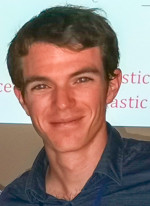
Antoine Wautier is currently a research engineer in the RECOVER joint research unit at INRAE. His research work focuses on the modeling of the mechanical behavior of granular materials, and on the modeling of the mechanisms leading to their failure. As such, he studies in particular how internal erosion can affect the mechanical stability of eroded materials. Antoine Wautier also participates in expertise activities related to the safety of hydraulic structures, in support of the State control services.
-
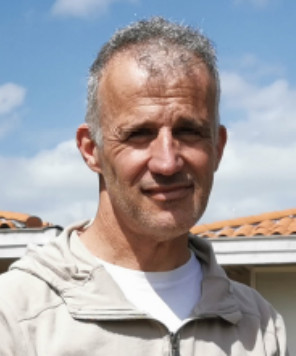
Jean-Pierre Wigneron, SupAéro engineer, is director of research at Inrae, Bordeaux. He has developed pioneering work in the 2-parameter inversion of soil moisture and the VOD index, which is well related to plant biomass, from passive microwave observations. This work is the basis of the algorithms for processing observations from the SMOS satellites of ESA (European Space Agency) and SMAP of NASA. Recently, he coordinated the development of SMOS and SMAP (soil moisture and vegetation biomass) datasets, which are very innovative for applications on the water and carbon cycle. These remote sensing datasets from the INRAE Bordeaux laboratory are currently used in numerous international studies to monitor environmental changes and their impact on forests (deforestation, degradation, fire, drought, etc.). These studies have resulted in recent articles in Nature, Nature Clim. Change, Nature Geosc., Nature Plants, PNAS, etc. Jean-Pierre Wigneron is a fellow member of the IEEE society, associate editor of the international journal Remote Sensing of Environment, and member of the scientific committee of the national pole of remote sensing (THEIA). Jean-Pierre Wigneron has published more than 250 articles in international journals, has an H-index of 72 and is part of the 2021 list published by Clarivate Analytics of the most cited researchers in the world, a list which includes six scientists from Bordeaux and eight researchers INRAE.
-
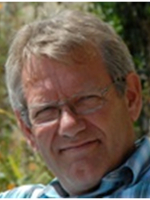
Robert Wyns holds a PhD in structural geology (Université Pierre et Marie Curie) and has been a geologist at the Bureau de Recherches Géologiques et Minières since 1981. He participated in the survey of the geological map of France in the Paris basin and then in the Armorican Massif, before leaving for the Middle East and Saudi Arabia. He has also worked on mining (France, Saudi Arabia) and oil projects (Madagascar) and has participated in numerous research projects. Since 1995, its activity has focused mainly on rock alteration processes and the characterization of their physical properties, through scientific research projects and applications, particularly in support of public policies. He has developed methods for mapping and modelling these properties, particularly in the context of altered basement. It is at the origin of the discovery of the fissured horizon in the deep part of the lateritic profiles and its link with alteration processes. Together with his hydrogeological colleagues, in particular Patrick Lachassagne and Benoît Dewandel, he contributed to the development of the modern concept of the stratiform basement aquifer and its validation in different countries or continents (Europe, South Korea, India, Burkina Faso, Guinea, Madagascar, Guyana, New Caledonia...). In addition to his research and public policy support activities, he has been teaching in several universities and engineering schools for the past twenty years, and leads a training course dedicated to the alteration of rocks and their applications within the BRGM.
-
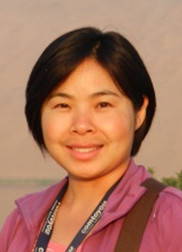
Qiuzhen Yin obtained the title of Doctor of Science at the Institute of Geology and Geophysics of the Chinese Academy of Sciences in 2006 with a thesis on the relations between loess, monsoon and climate. Since then, she has been working on paleoclimate modelling at the Centre de Recherches sur la Terre et le climat de l’Université de Louvain. Her main contributions focus on interglacial climates and monsoon dynamics in the Quaternary. She is a member of the International Climate Commission and an associate member of the Belgian National Committee for Geodesy and Geophysics. She is a member of the Editorial and Publishing Committees of Global and Planetary Change, Quaternary International, Quaternary Sciences and Climate of the Past. In 2016, she was awarded the Lagrange Prize of the Royal Academy of Belgium.
-
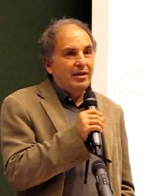
Edwin Zaccai holds a PhD in environmental sciences, a civil engineering physicist and a degree in philosophy. Professor at the Université Libre de Bruxelles, he heads the Centre d'Etudes du Développement Durable (CEDD), which he founded in 1997. He was also a lecturer at Sciences Po Paris. His research and teaching focus on different aspects of sustainable development related to the transformations of societies as a result of environmental issues. He has published on many topics that are interdisciplinary and often collaborative: the precautionary principle, environmental indicators, environmental inequalities, sustainable consumption, the history of environmental ideas, climate controversies, and adaptation to climate change. A member of the Federal Council for Sustainable Development (1997-2012), he is a member of several scientific committees of journals, such as Vertigo, Développement Durable et Territoires, Natures Sciences Sociétés, Belgeo, and the Revue Française de Socio-Economie. Among his books: E. Zaccai, 25 years of sustainable development, and after? (PUF, 2011); E. Zaccai, F. Gemenne and JM. Decroly (dir.), Controverses climatiques, sciences et politiques, (Presses de Sciences Po, 2012).




